
Percussion instruments (ideophones and membranophones) comprise the largest and most widespread family of sub-Saharan African instruments. These instruments are used for rhythmic, melodic, and communicative purposes. Some of these instruments were taken to South America and the Caribbean, and form an important staple of music there as well. In particular, metal-barred lamellophones like the kalimba and mbira, as well as pitched-wood instruments like the bala and marimba are unique to Africa. Beyond this, harps and lyres made of wood, gourd, and animal skin are popular throughout southern Africa.
| Mbira Music |
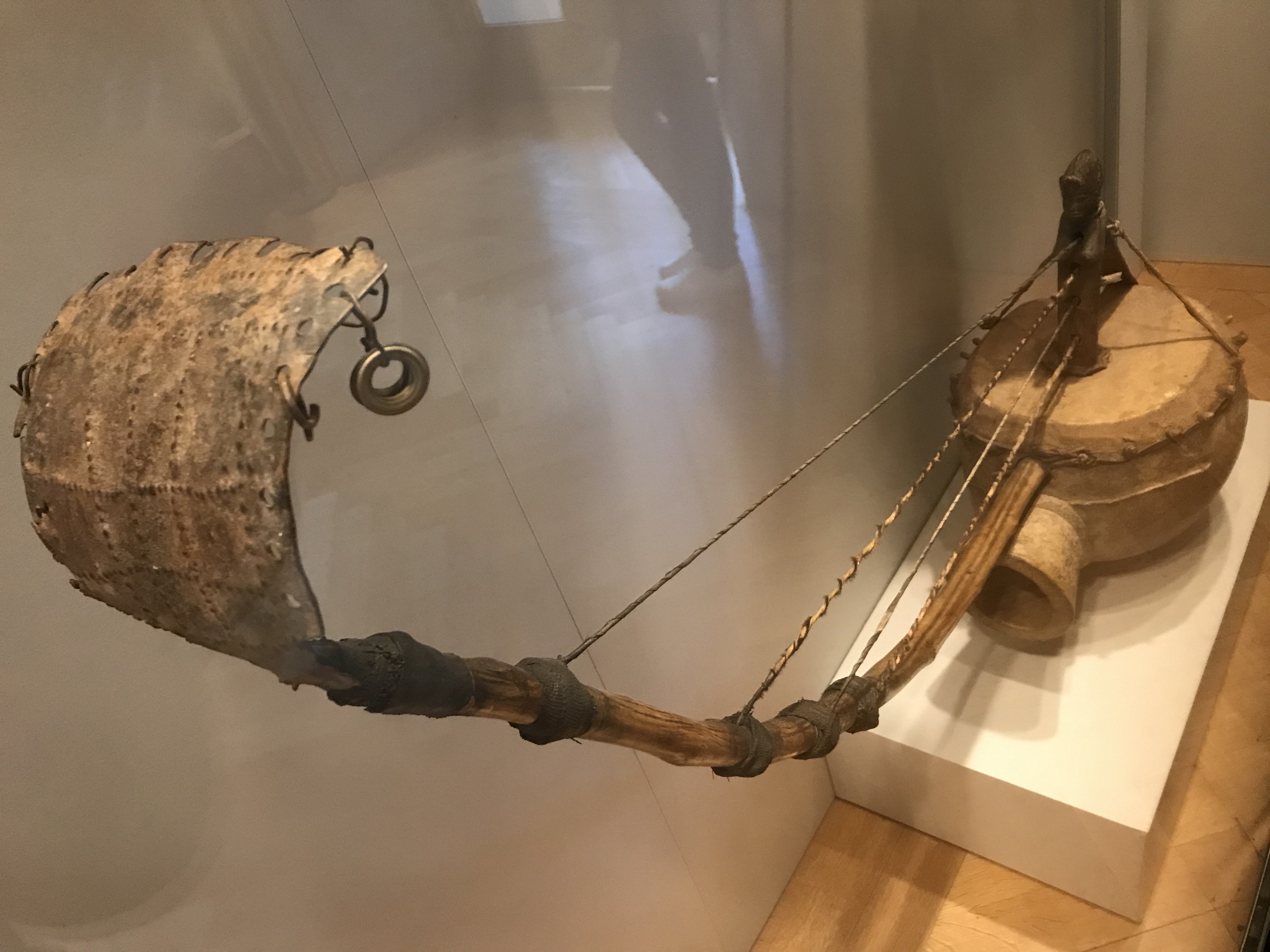
This Senufo instrument, the name of which means "hunter's harp," has a wooden rather than a gourd resonator. Like many instruments found along the West African coast, it has a vertical bridge to provide string tension.
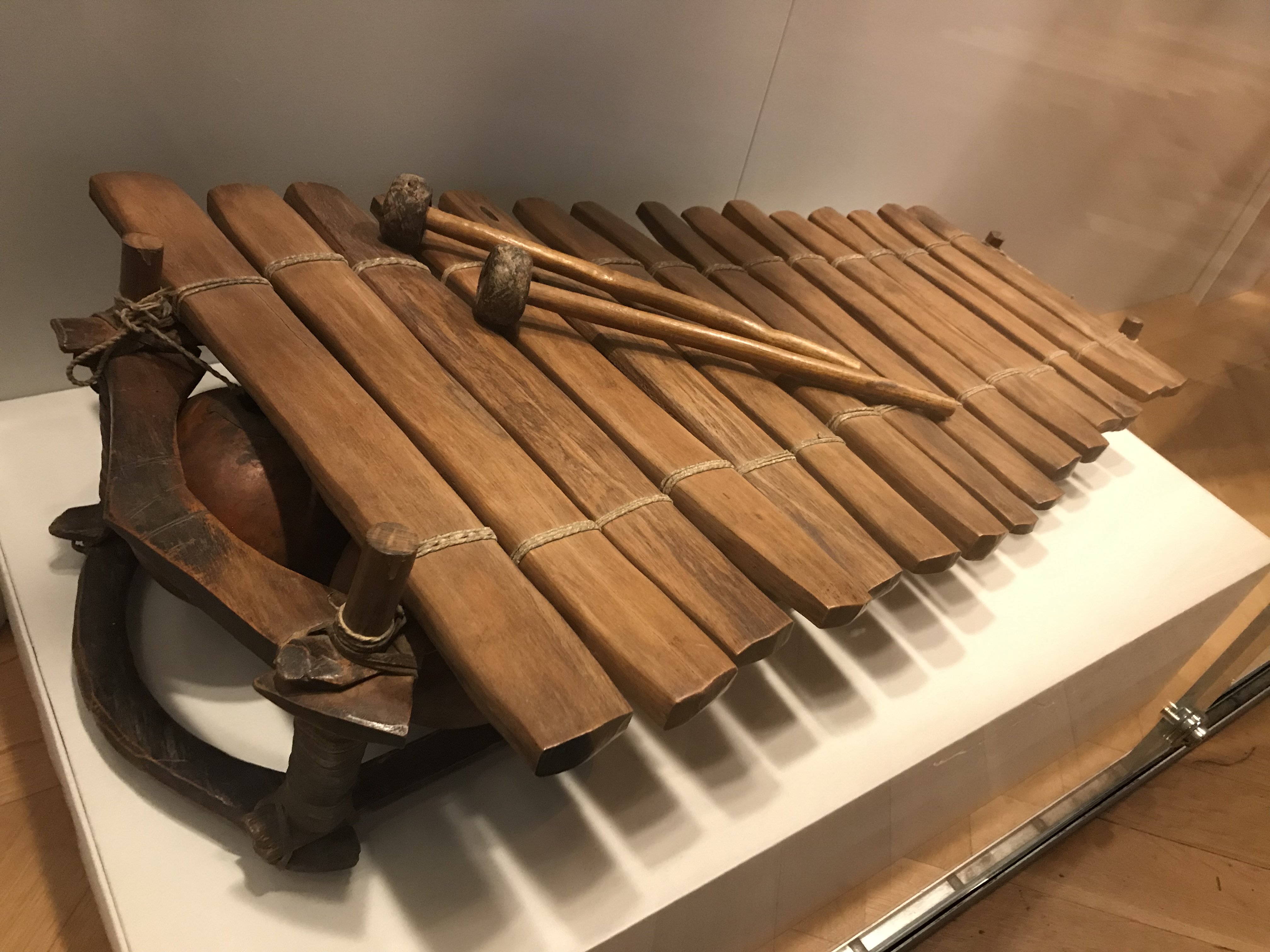
The bala is a wooden xylophone made by the Mandinka people of West Africa. It has fifteen wooden bar keys, each with a gourd resonator underneath. Each resonator has a spider's-egg casing membrane that vibrates when the corresponding bar is struck.
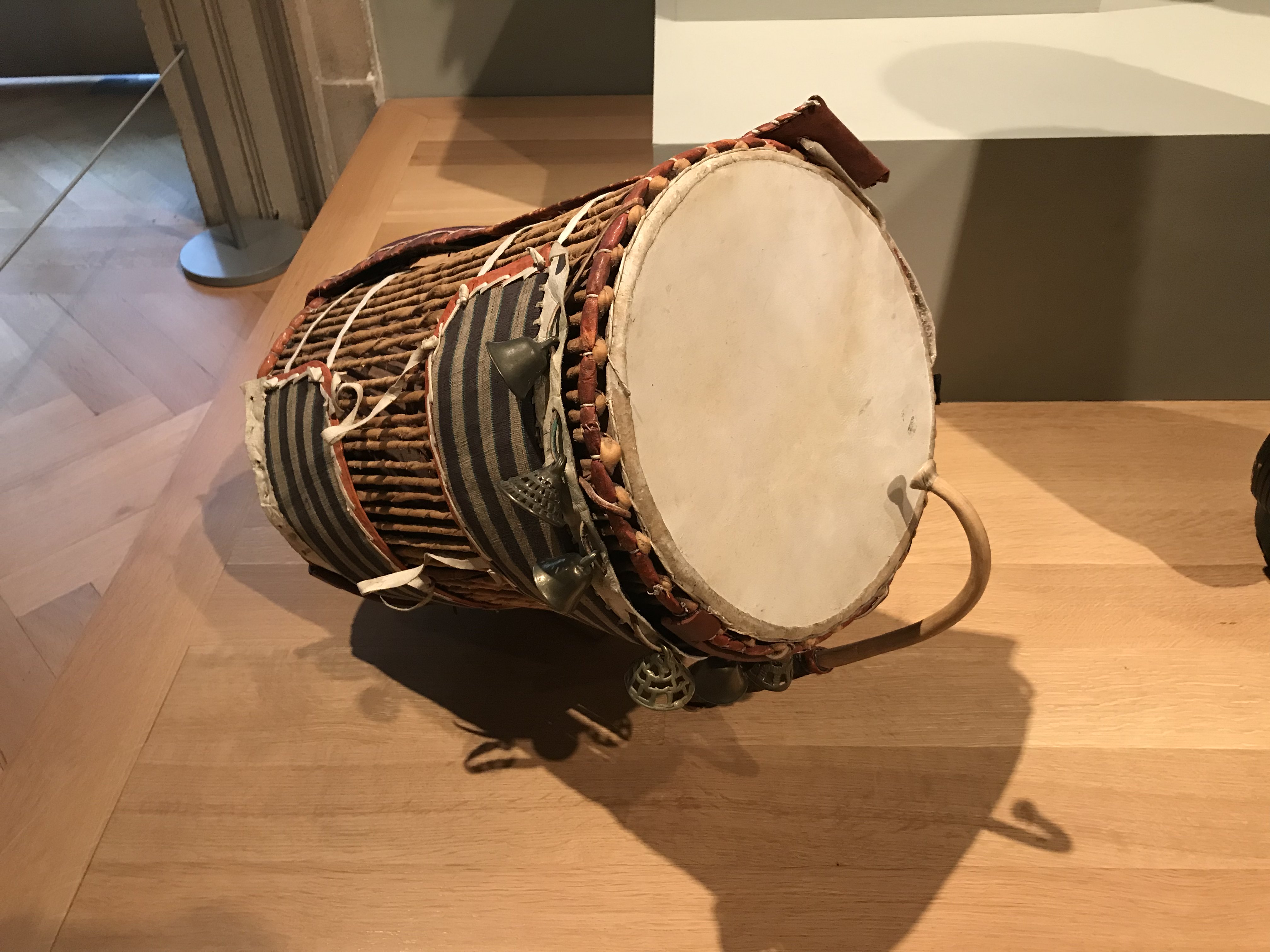
The dundun is a variable-tension drum where the pitch of the instrument is changed by tightening or loosening the strings that connect the membrane to the frame.
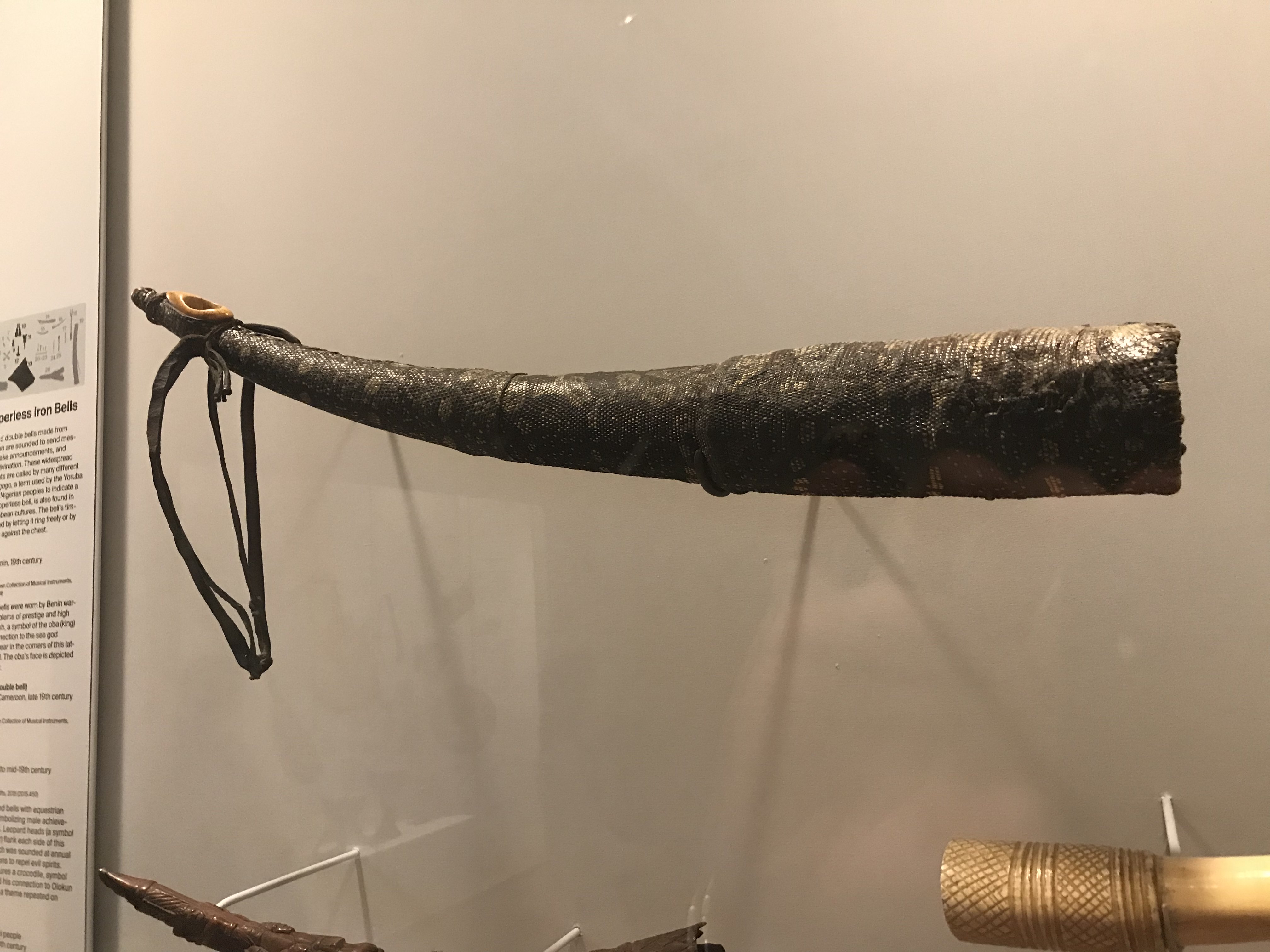
This horn is from the Congo and made out of ivory and Nile monitor lizard skin. Originally used for war, horns remain associated with power and prestige.
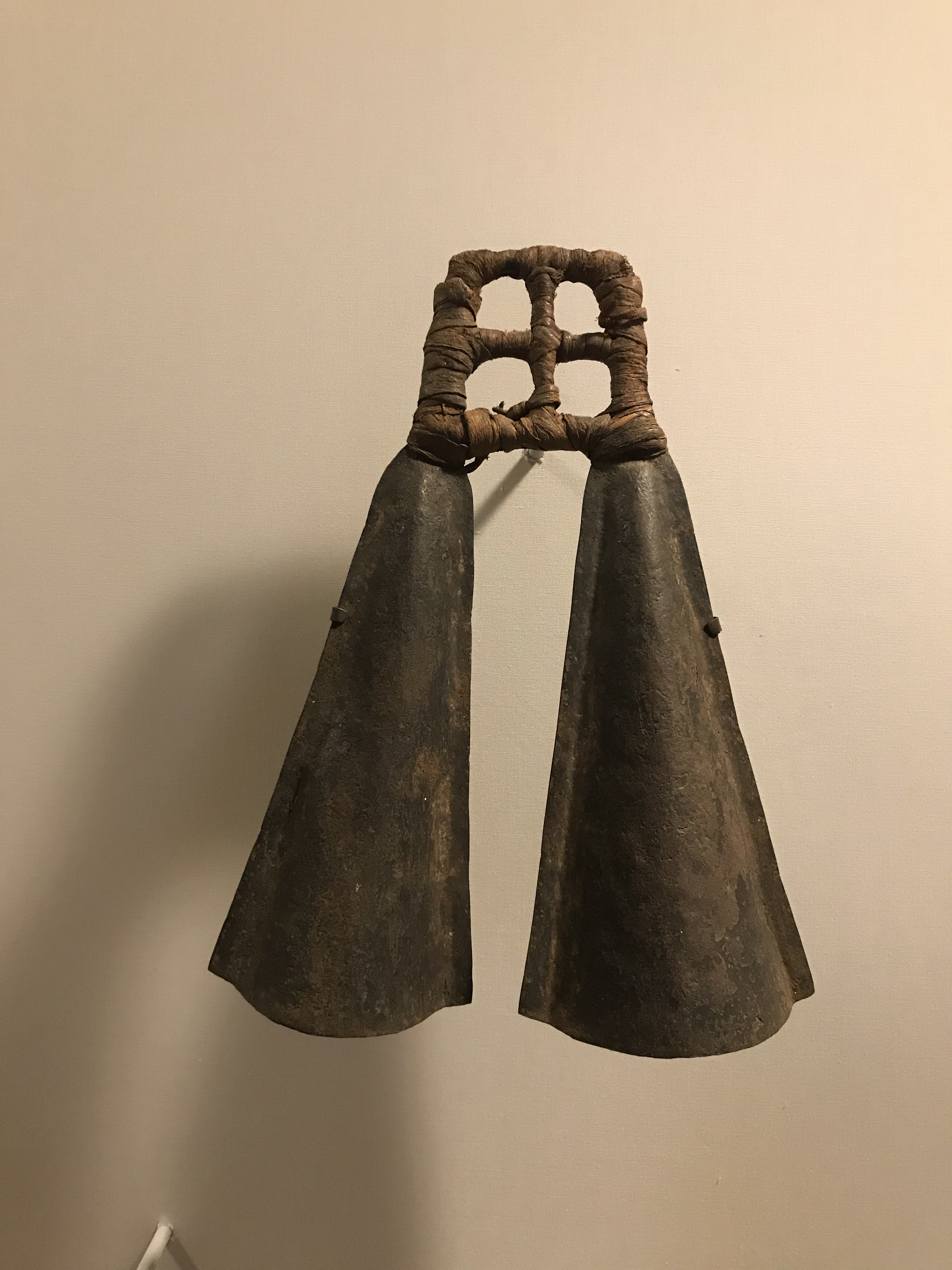
The double-belled agogo made its way across the Atlantic and is also used extensively in Latin American music.
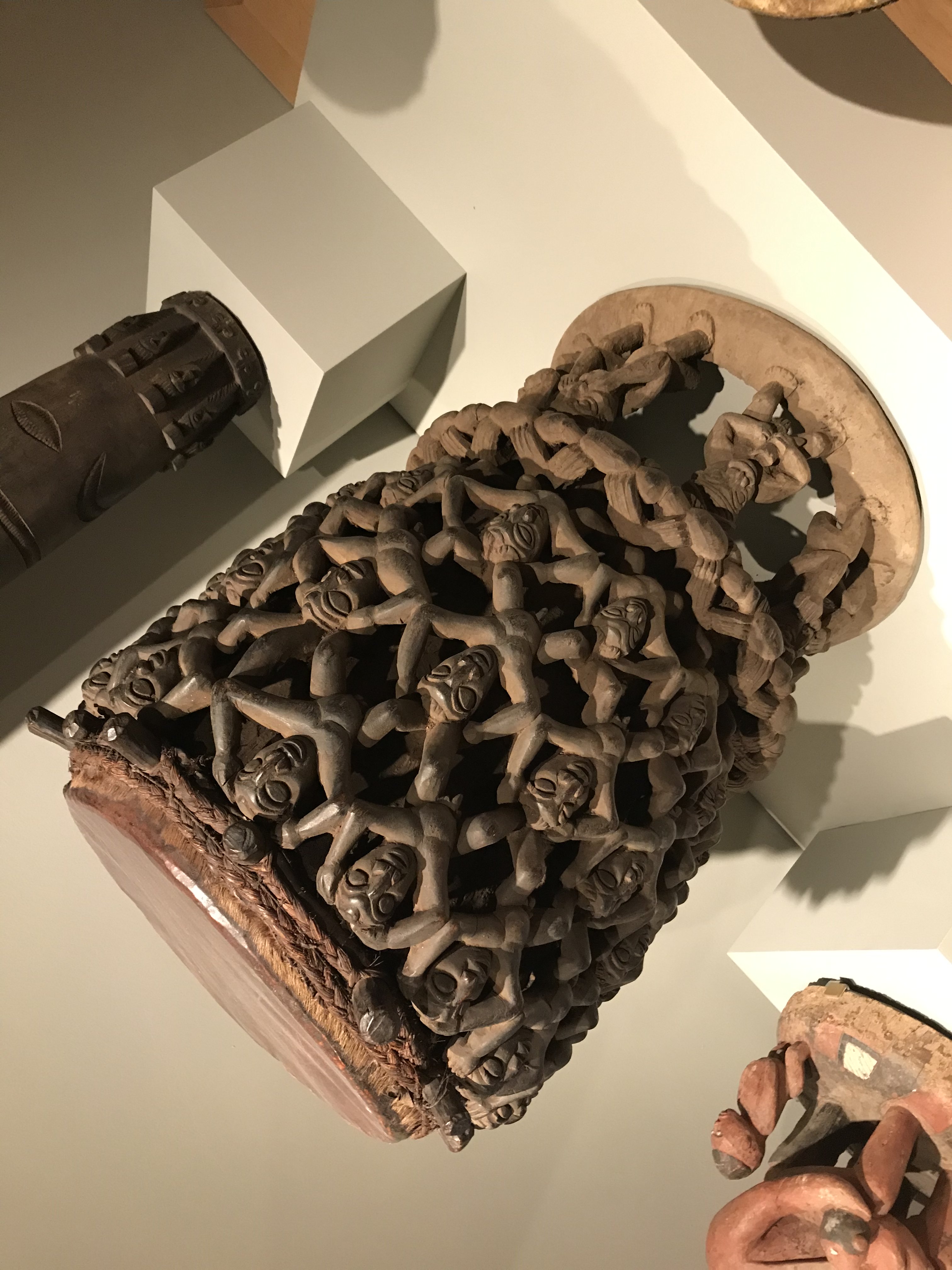
This Babungo drum from Cameroon is elaborately carved from a single block of wood. Although playable, a drum this orante was most likely displayed in the palace rather than being used for performance.
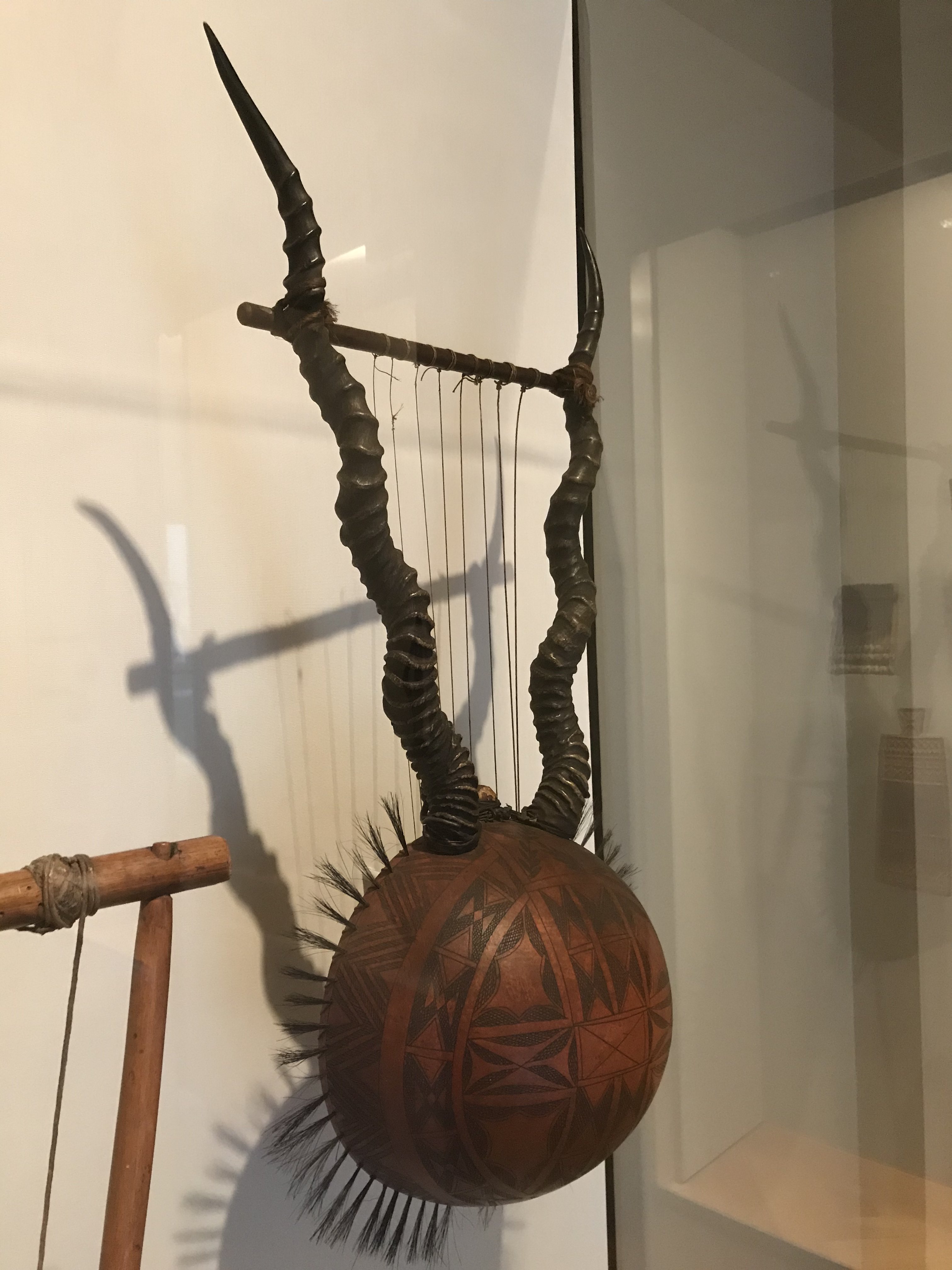
This Ugandan bowl lyre is made from a gourd; the crossbar holding the strings is supported by two antelope horns.
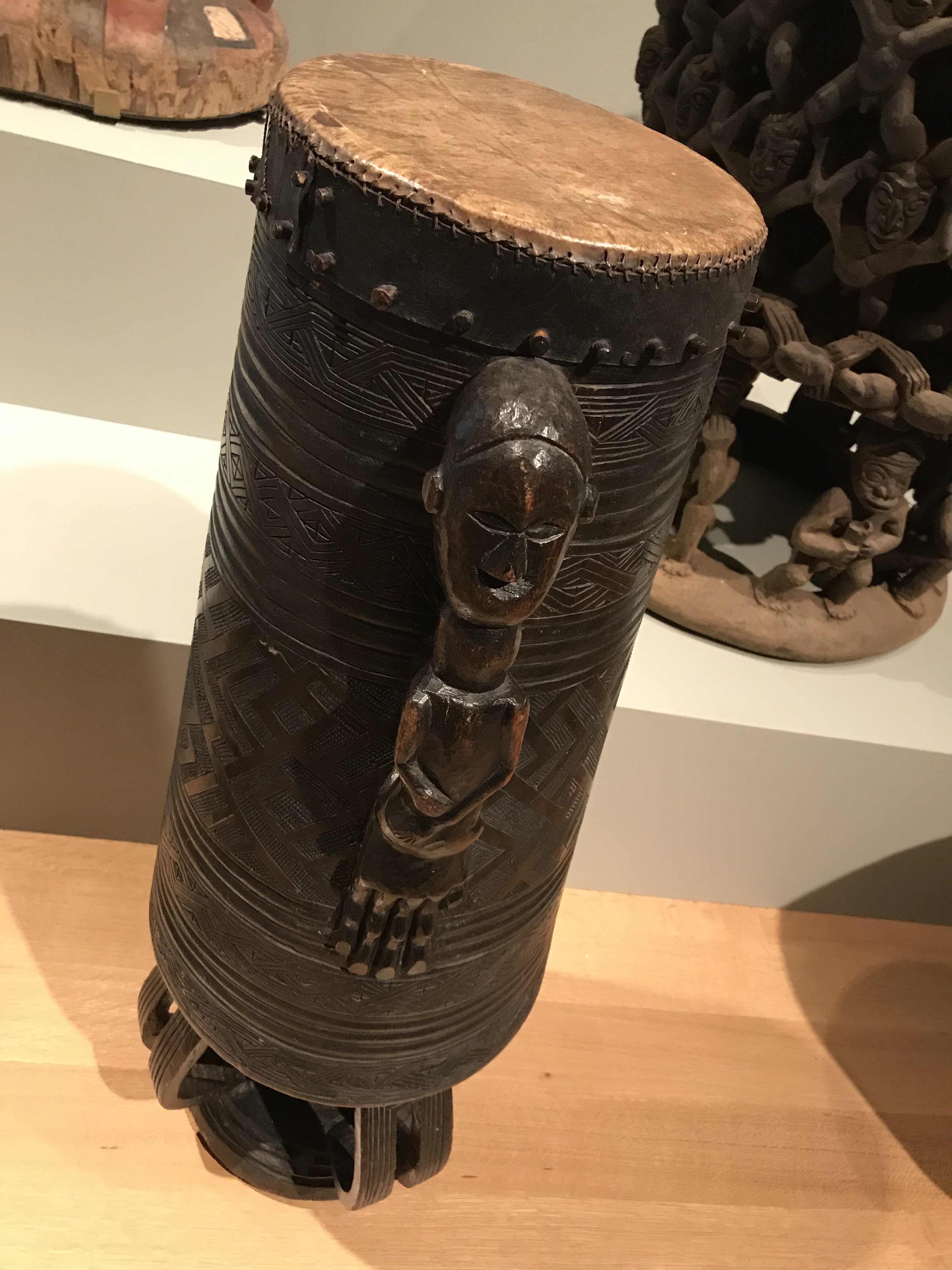
This drum was made by the Kuba people in today's Democratic Republic of the Congo. The legs and elaborate woodwork indicate this would have been used by elite members of the soldier class.
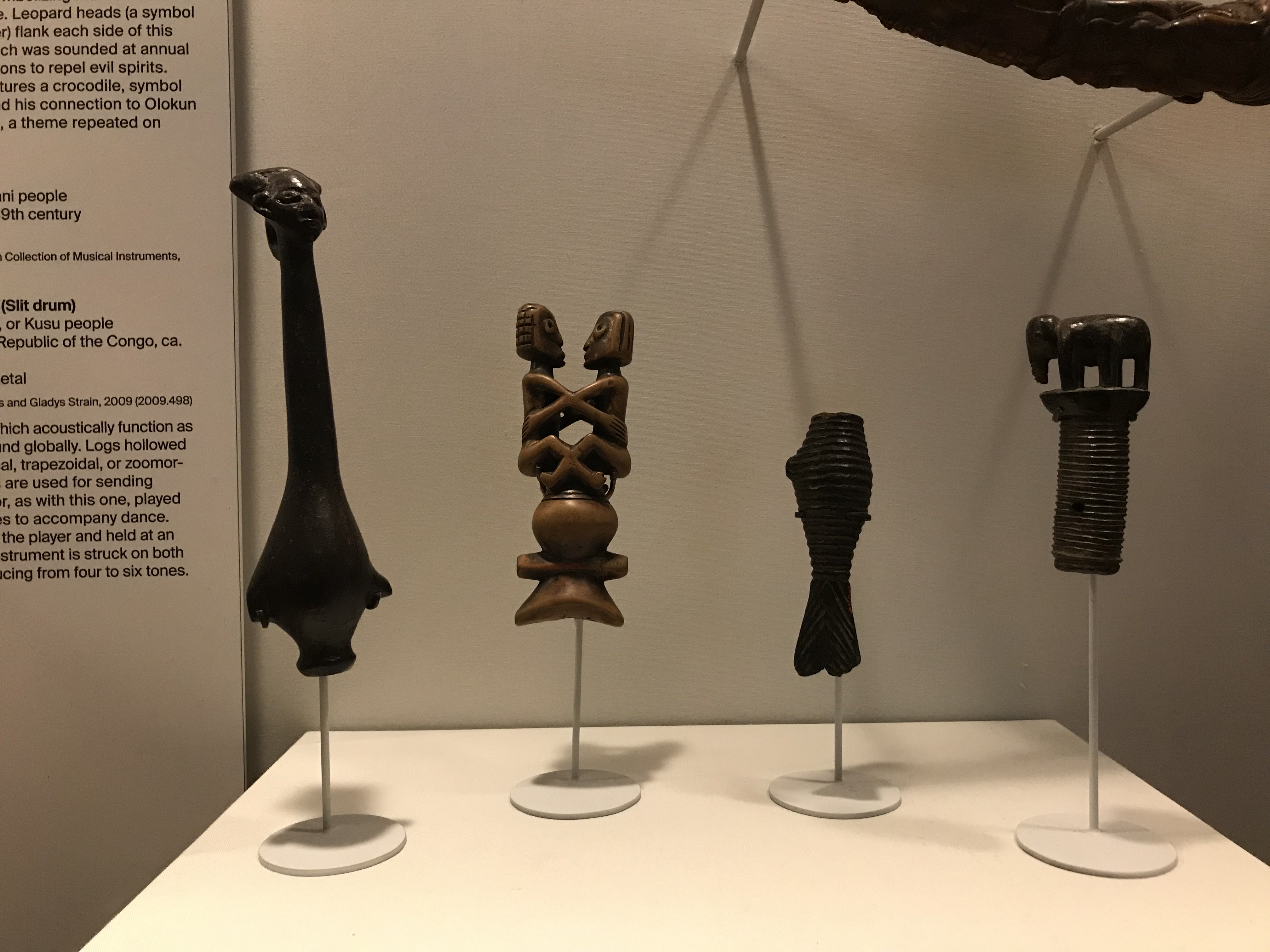
Whistles are formallly constructed like flutes, but lack holes to change the pitch and are thus used as signaling devices rather than musical instruments, although they can be used in musical ensembles if multiple whistles are pitched differently.
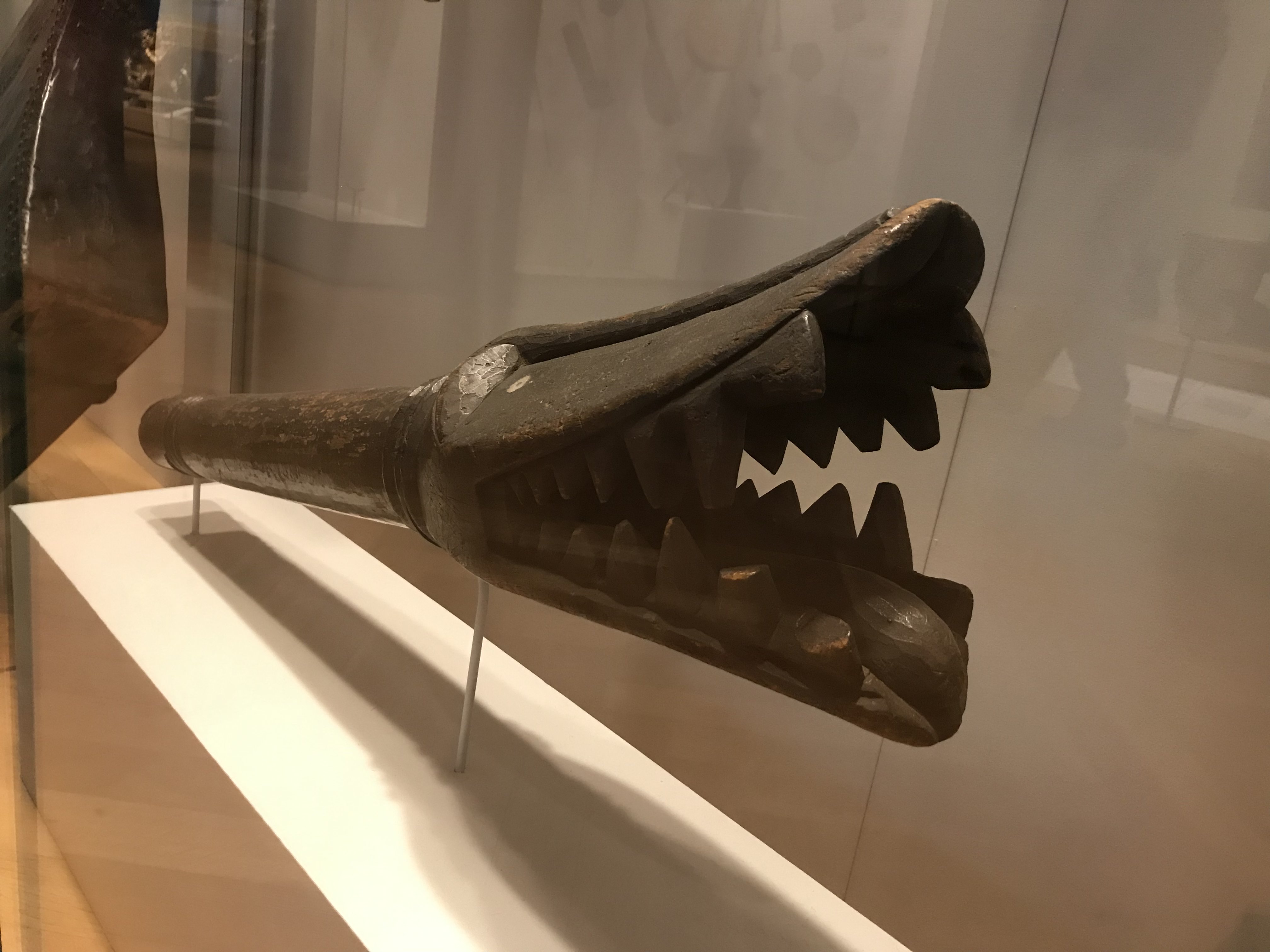
This Congolese megaphone is carved out of wood and decorated like a crocodile.
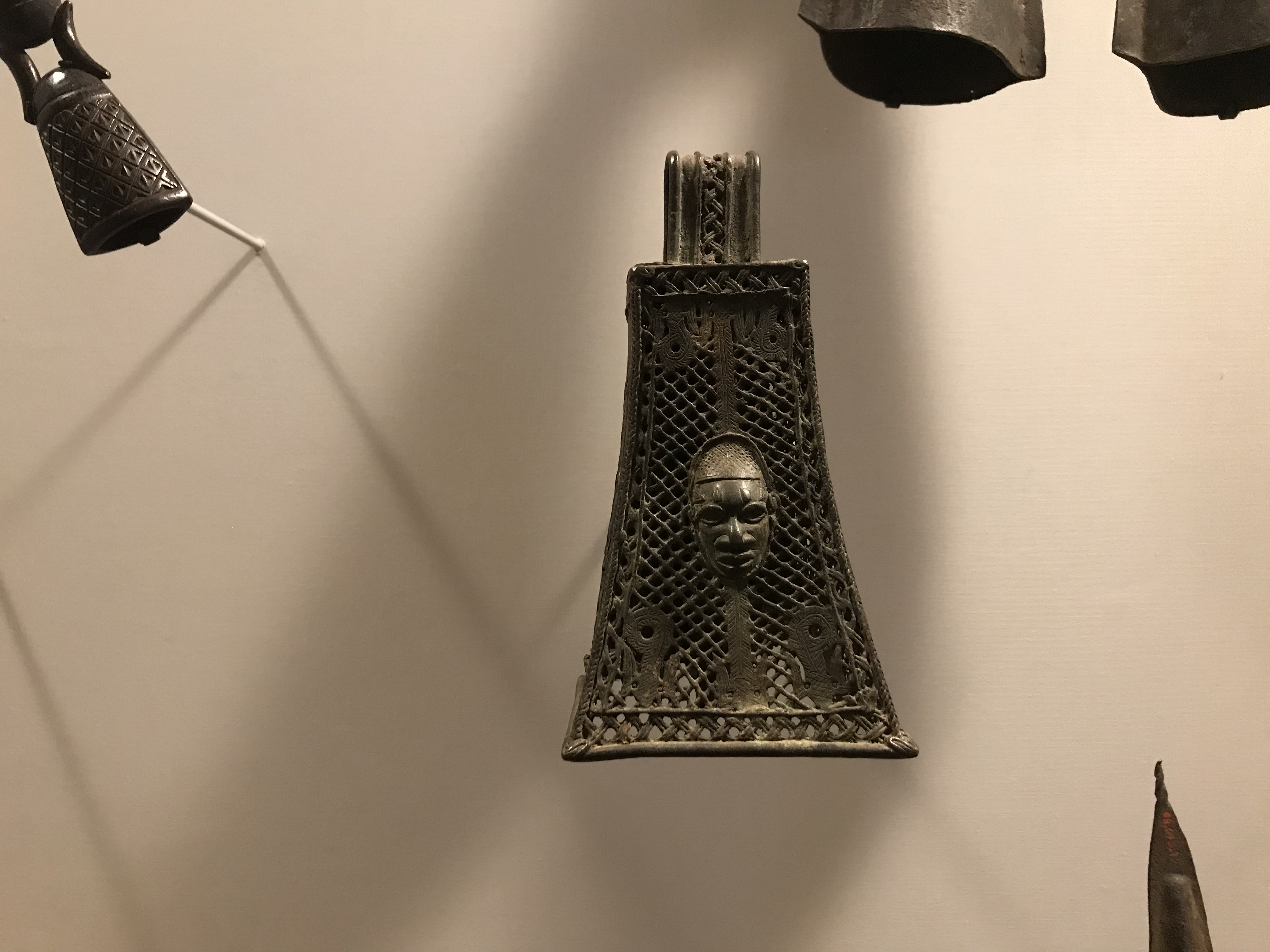
The Nigerian eroro is a pyramidal bell; such bells were worn by Benin warriors. This sample is decorated with images of fish, supposedly to connect the king to the sea-god Olokun.
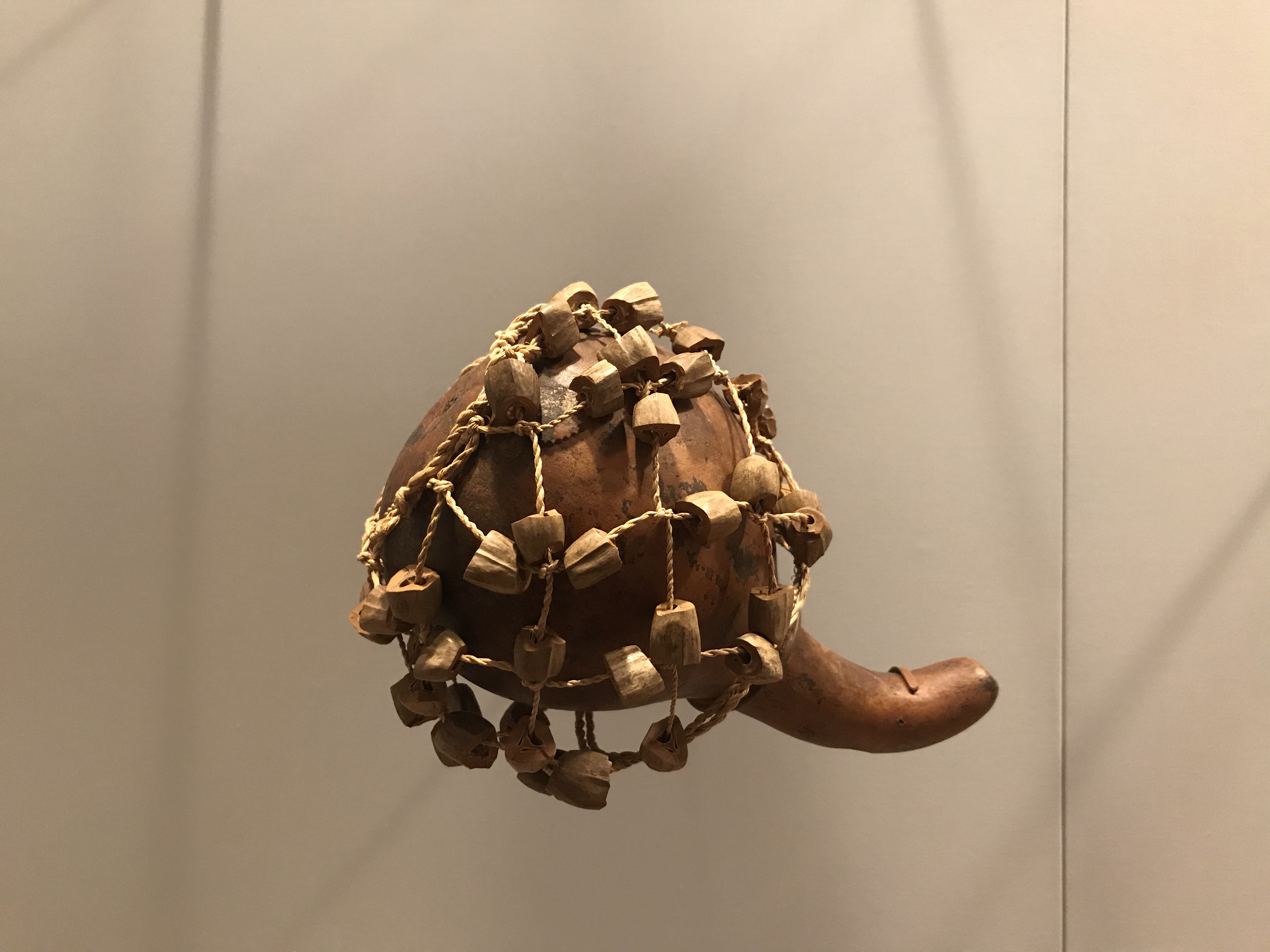
The ficaw is from Cameroon. This style of instrument is usually called by its Yoruba name, sekere. The bead mesh is exterior to the gourd, it can be played in a number of different ways: shaking, tossing, beating, etc.
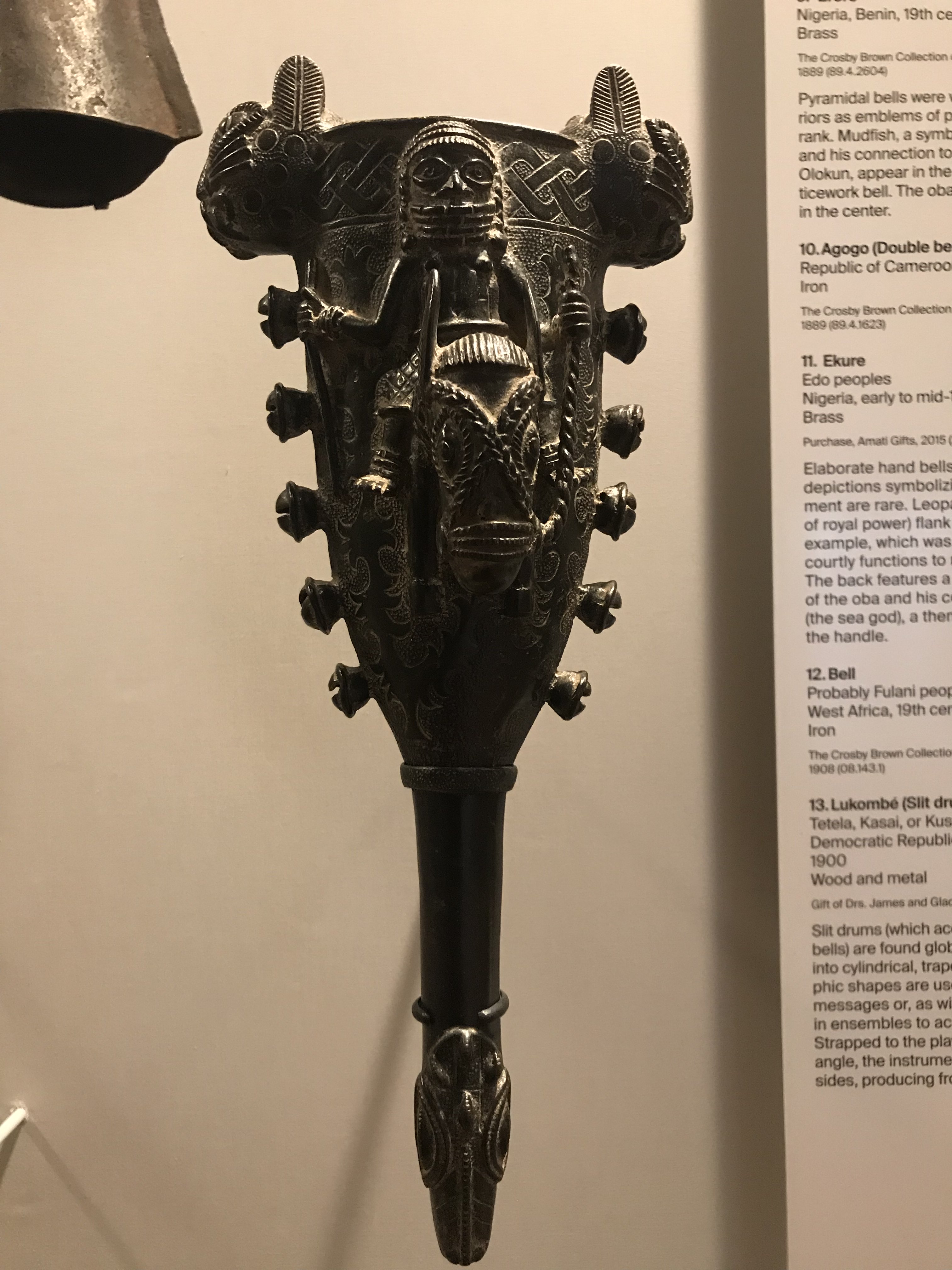
This is another Nigerian hand bell decorated with water creatures as a symbol of the king.
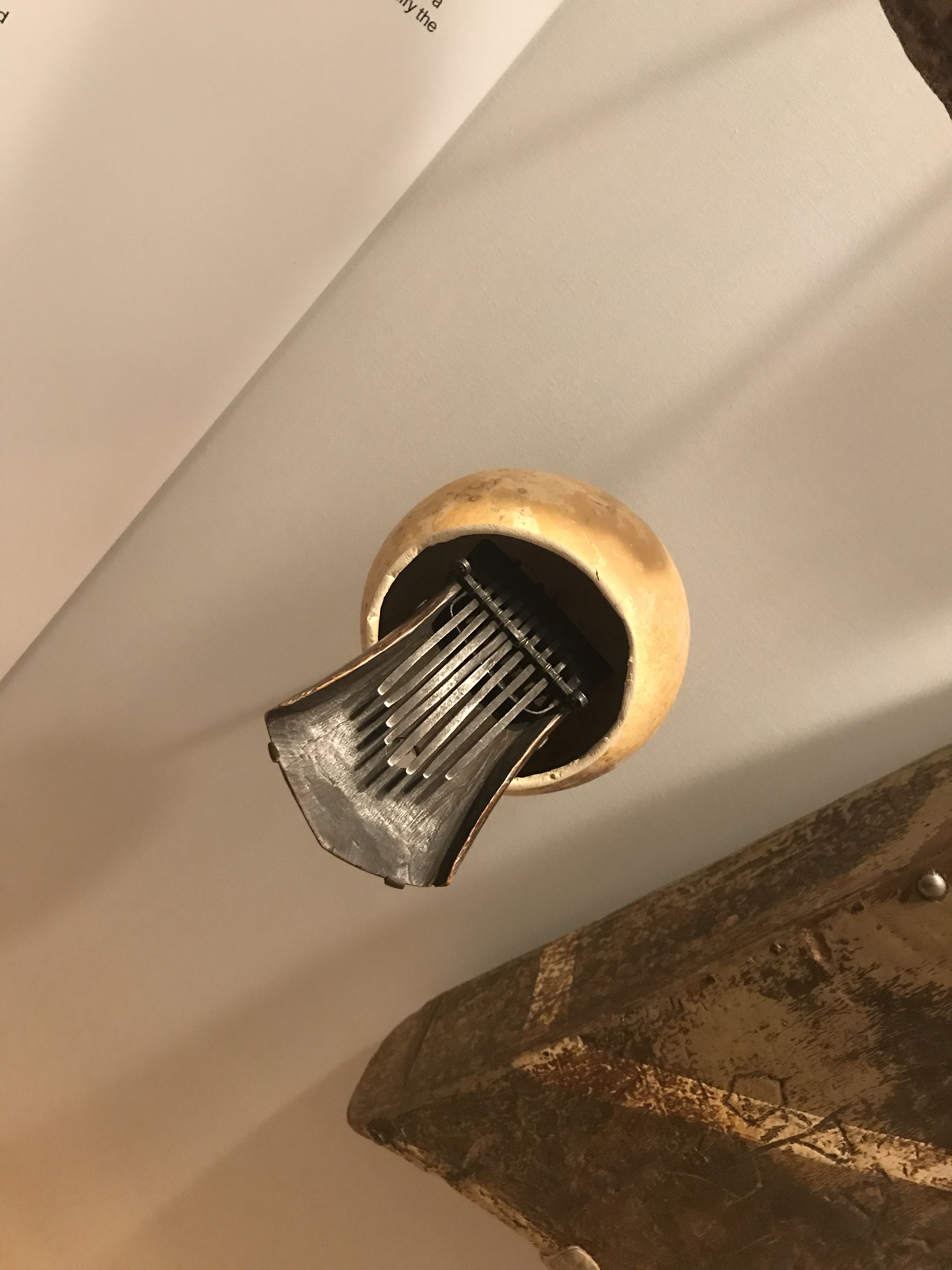
One of the most iconic African instruments, this kalimba from Zimbabwe features metal lamellae over a gourd resonator.
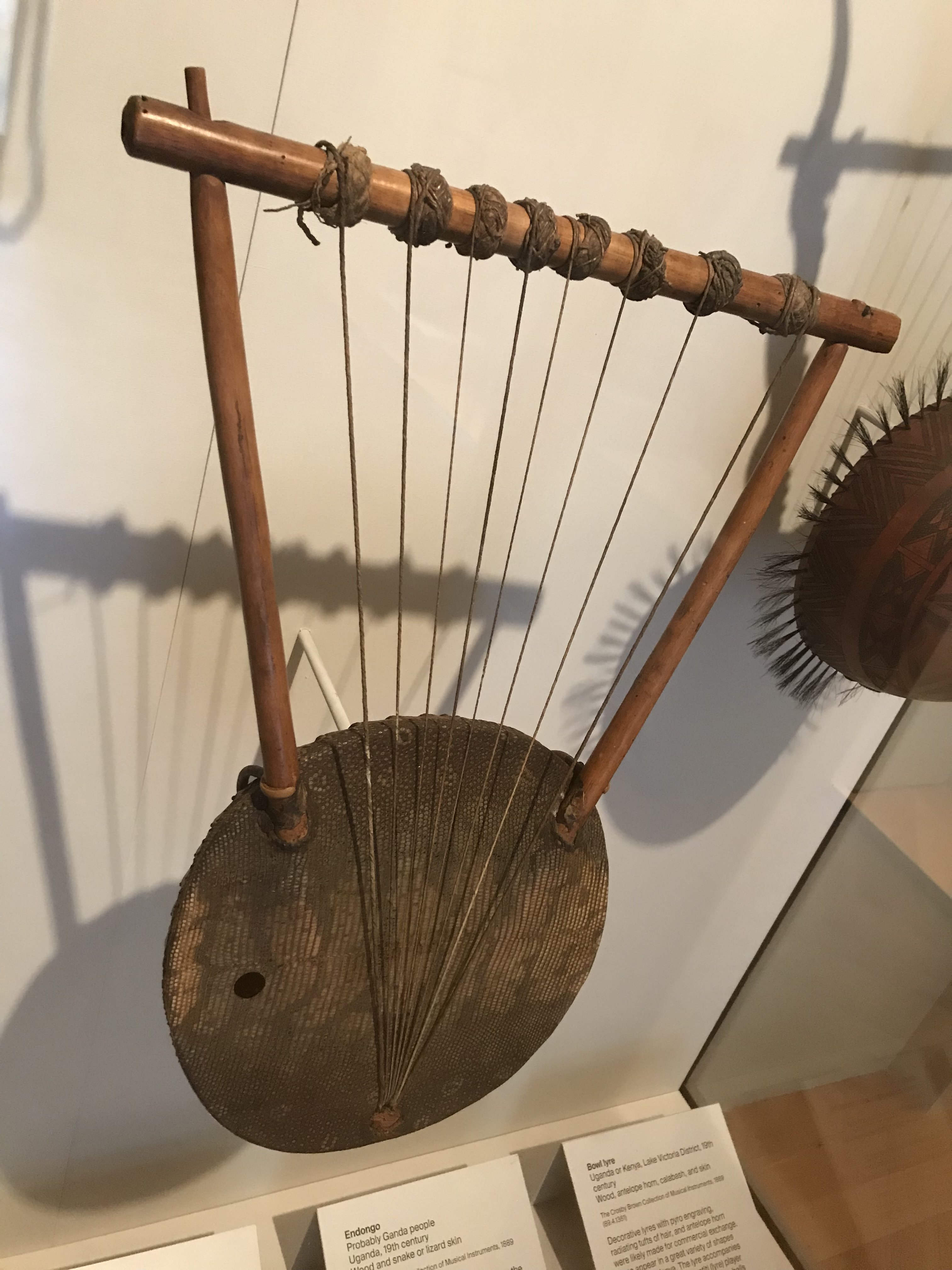
This is a Ugandan lyre with a gourd-and-lizardskin resonator. The strings vibrate against the skin membrane to create a buzzing sound when played.
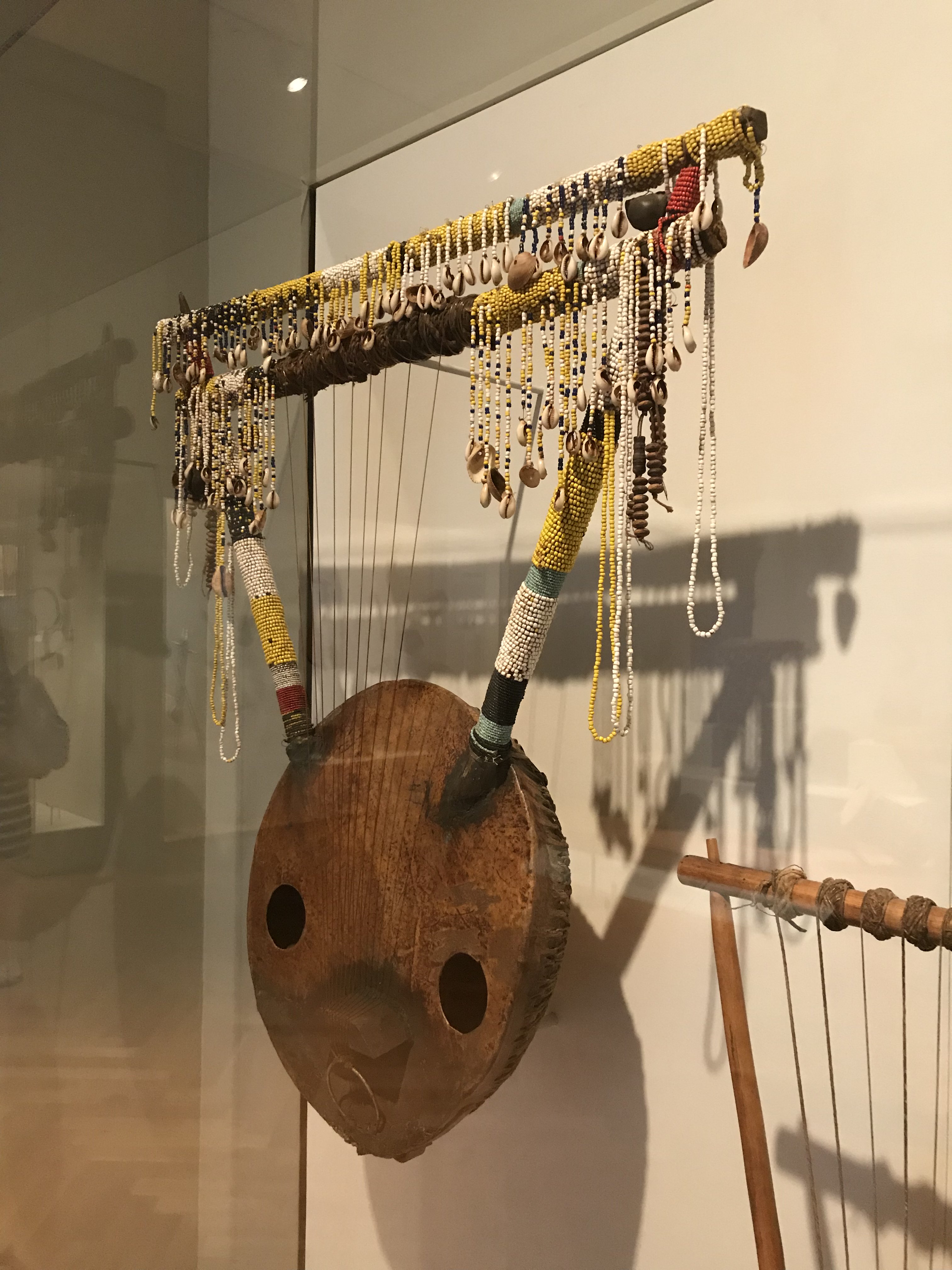
The kerar is an Ethiopian lyre with a wood-and-hide resonator, ornately decorated with beads and shells. It is played with a plectrum (pick).
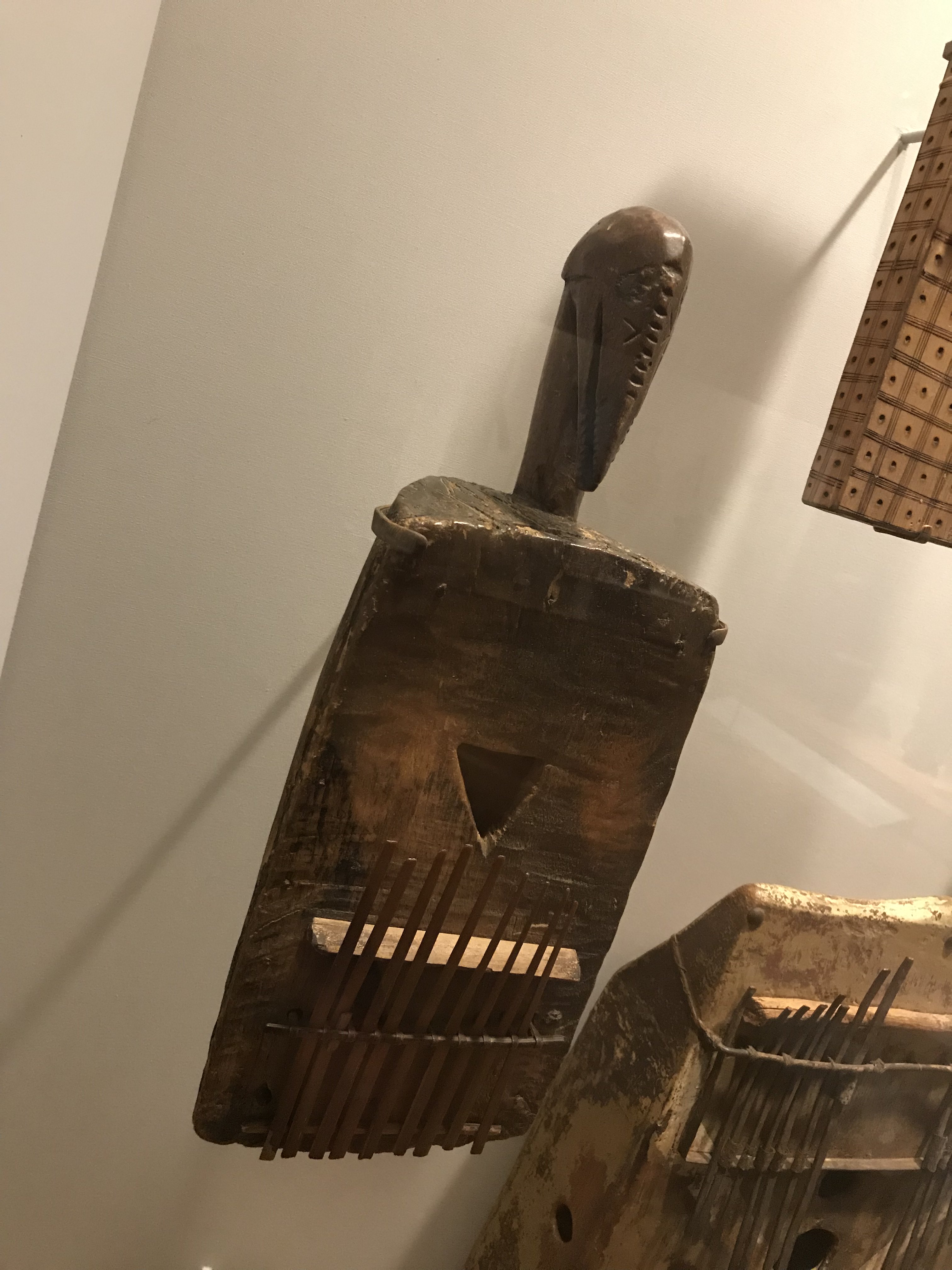
The Congolese kisanji is a lamellophone, a special type of ideophone featuring pitched metal pegs plucked with the thumbs.
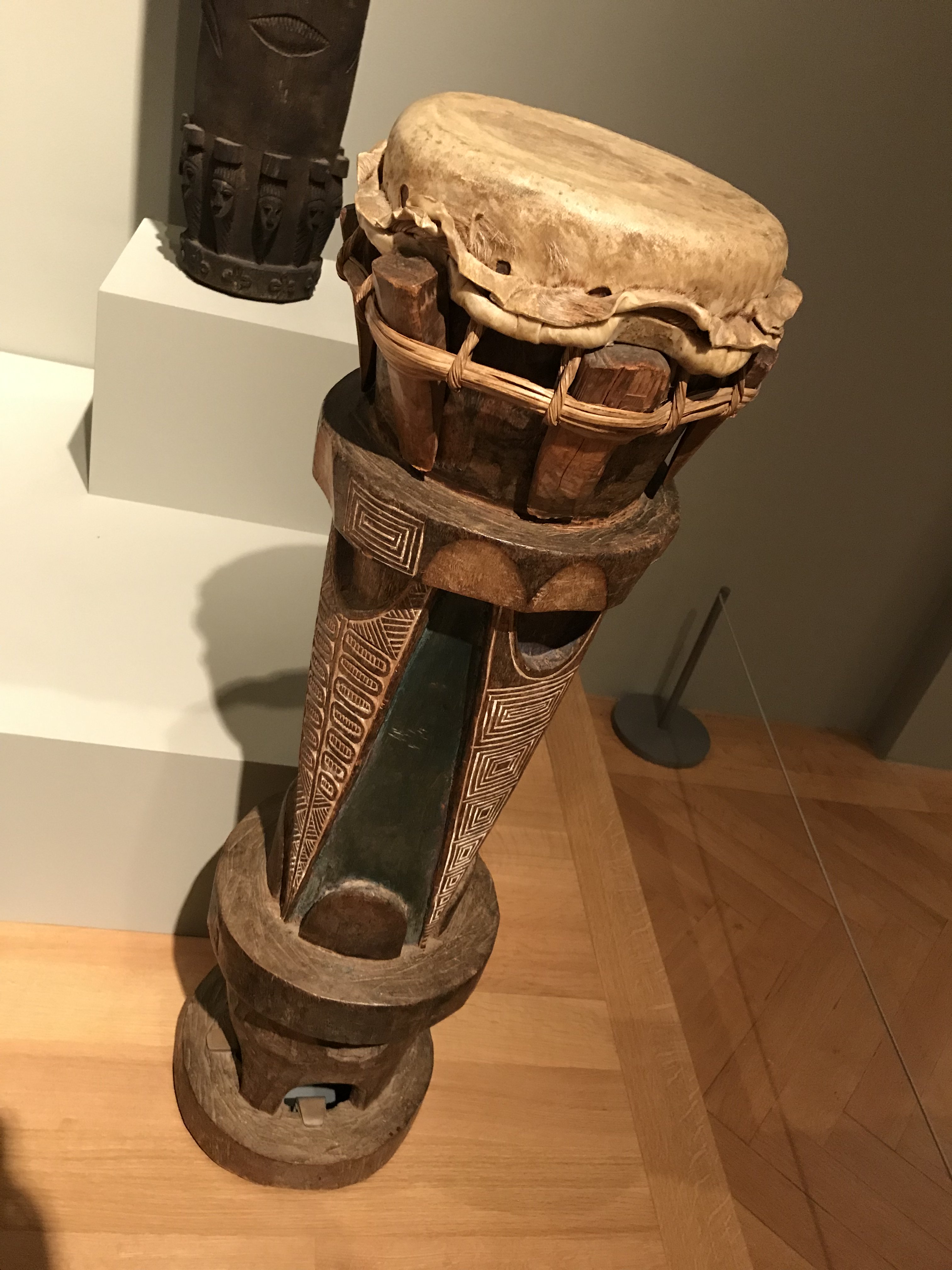
The mbejn is a wood and hide drum from Gabon that accompanies dances and is heard at funeral rites.
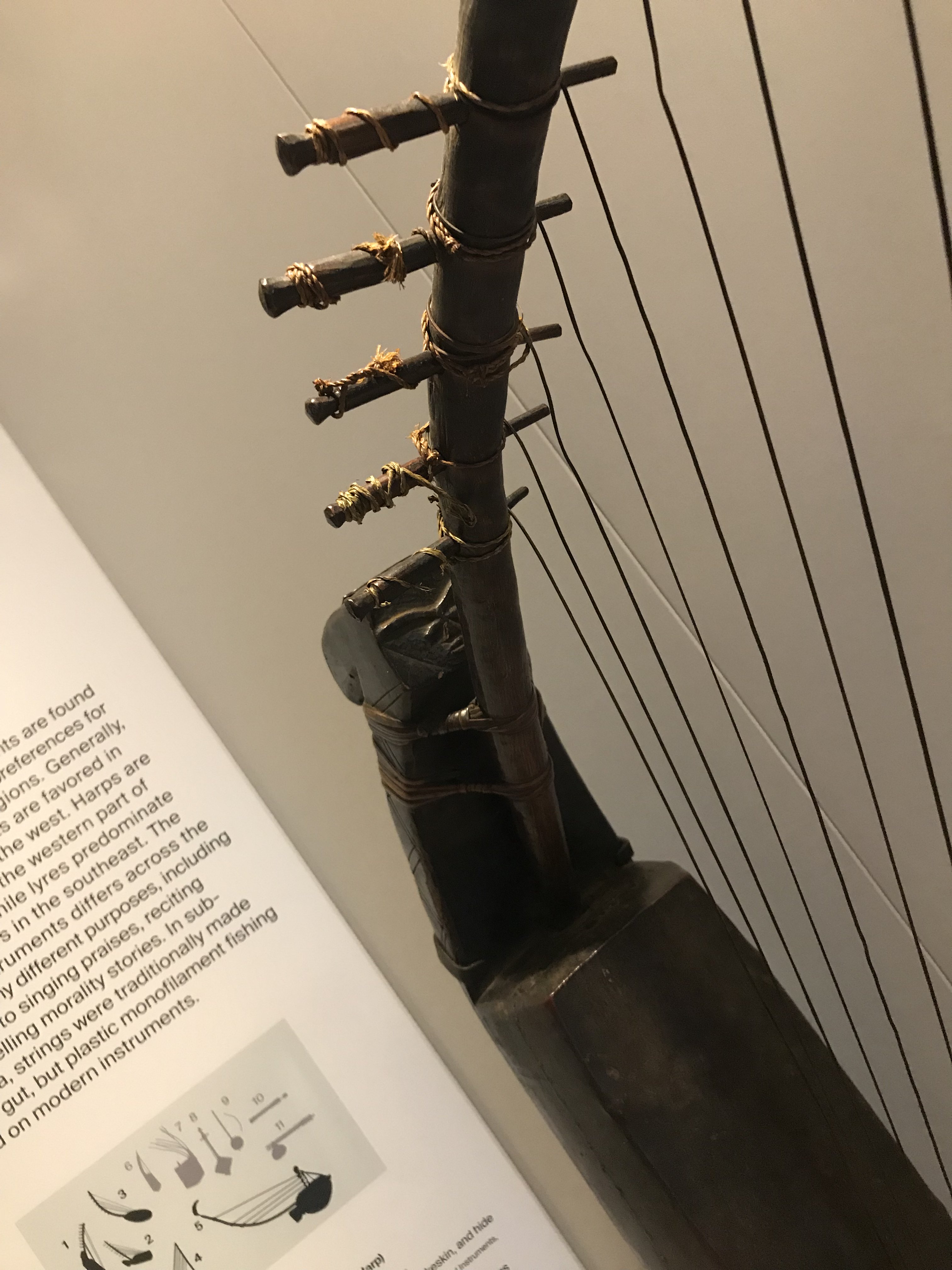
The ennanga is a Ugandan harp made from wood and snakeskin. The lacing is similar to that of a Uganda drum and the snakeskin functions as a vibrating membrane when the strings are plucked.
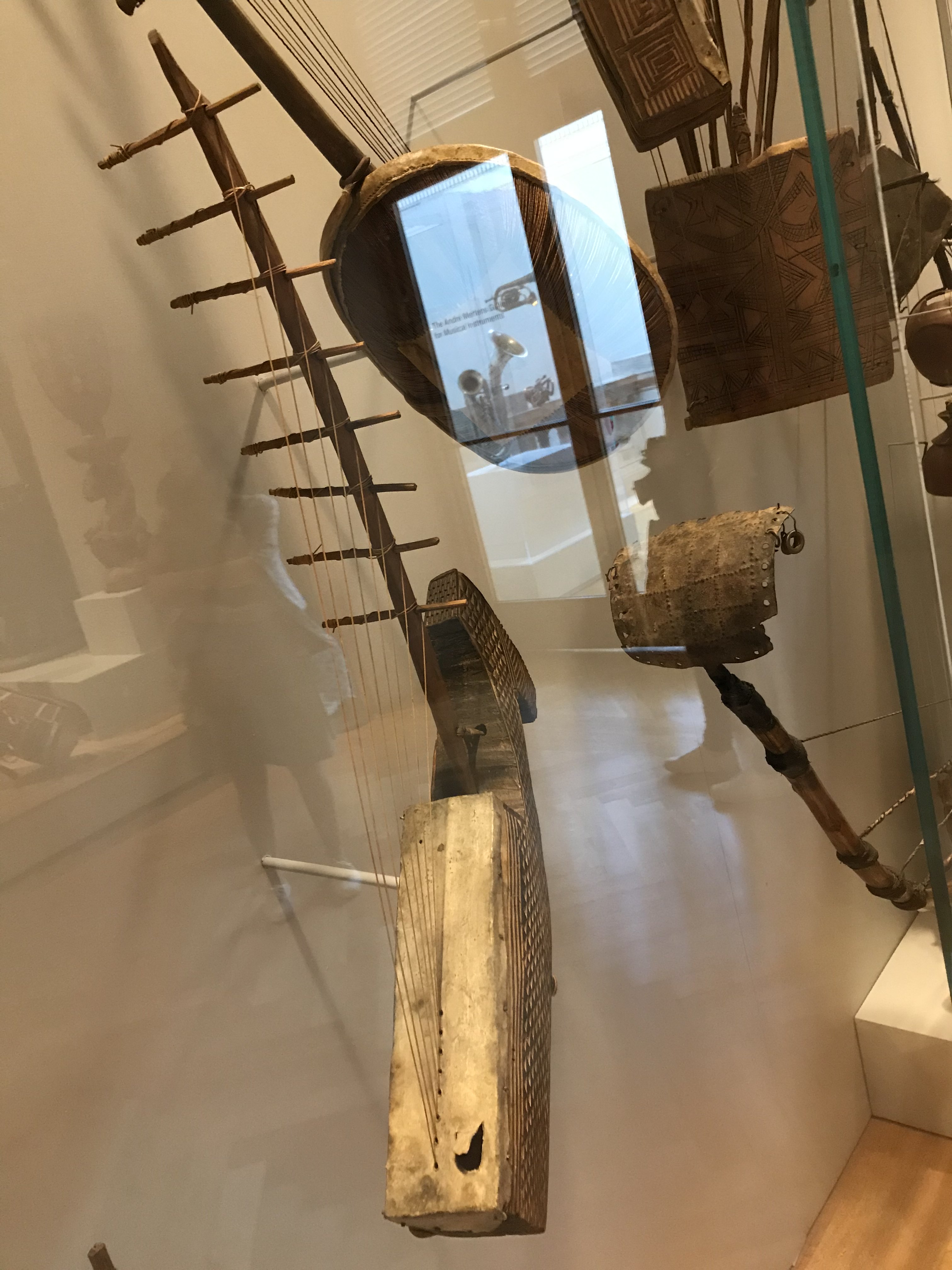
The ngombi is a harp made by the Tsogo from Gabon. The strings are fashioned out of palm fiber and the instrument is played against the shoulder.
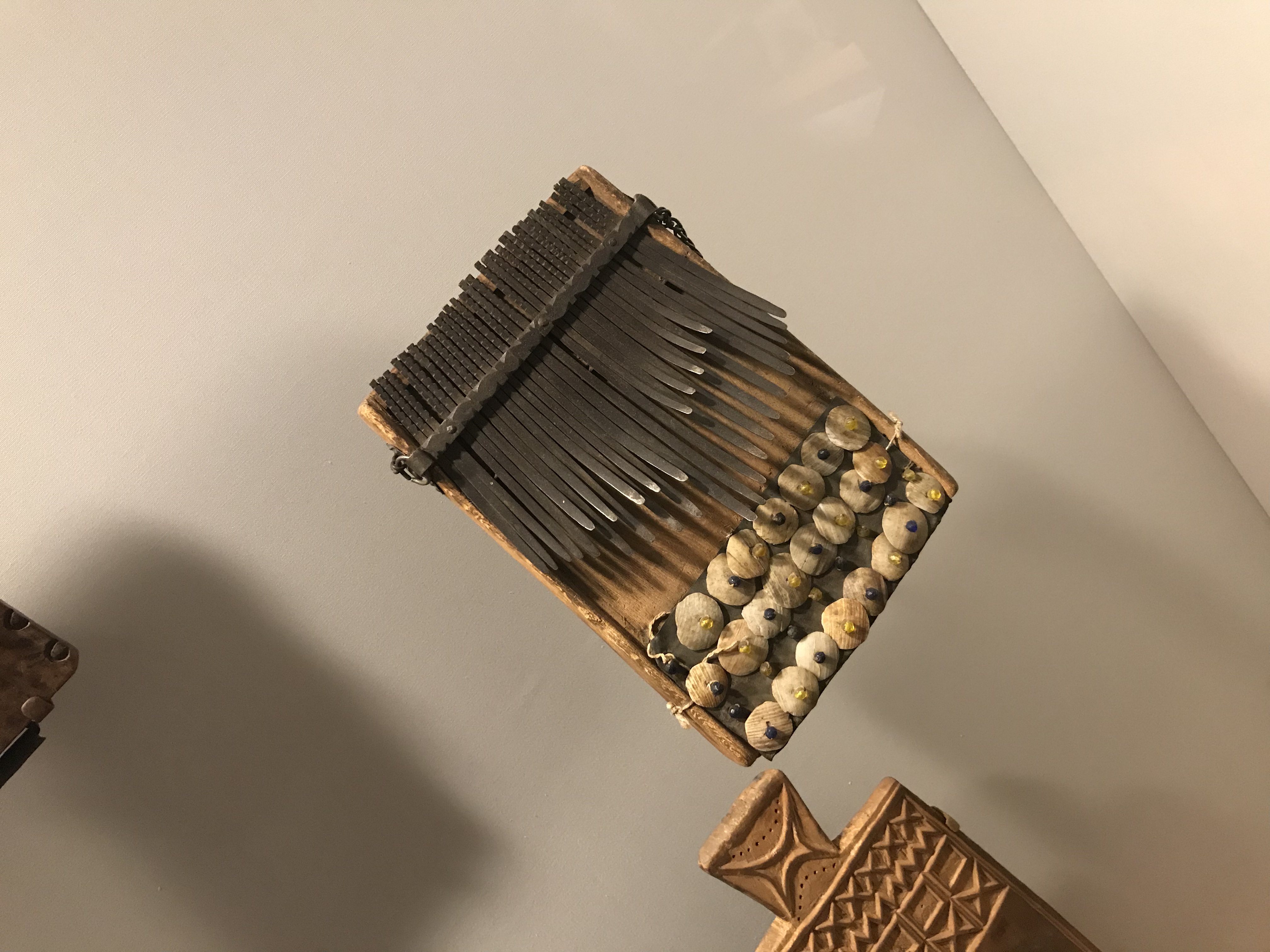
This instrument was made by the Barwe people of Mozambique. It features thirty-one lamellae and a leather band of jingles made from snail shells.
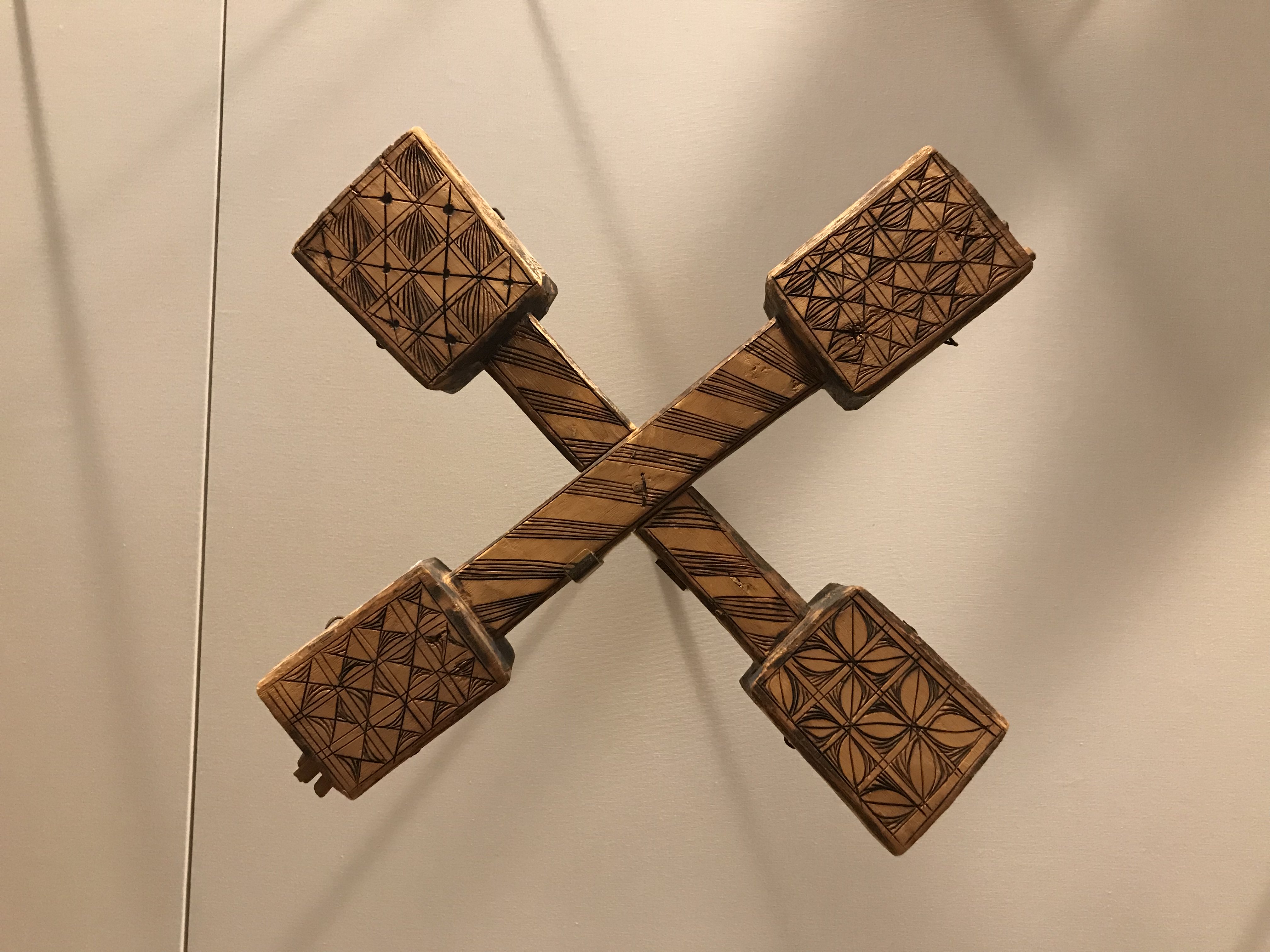
This instrument from Gabon features four bells that can be rung simultaneously or independently.
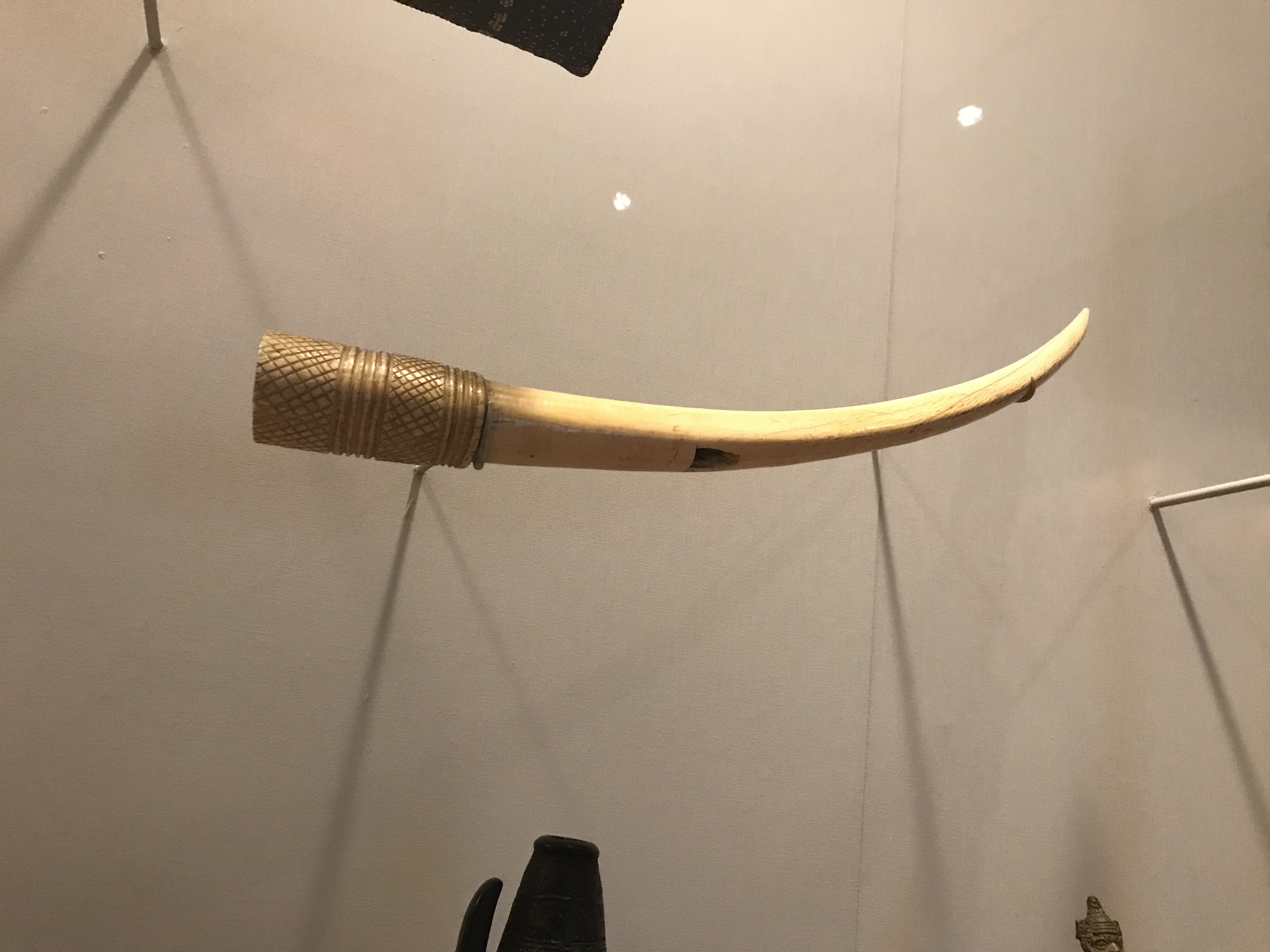
An ivory horn from the Igbo people of Nigeria.
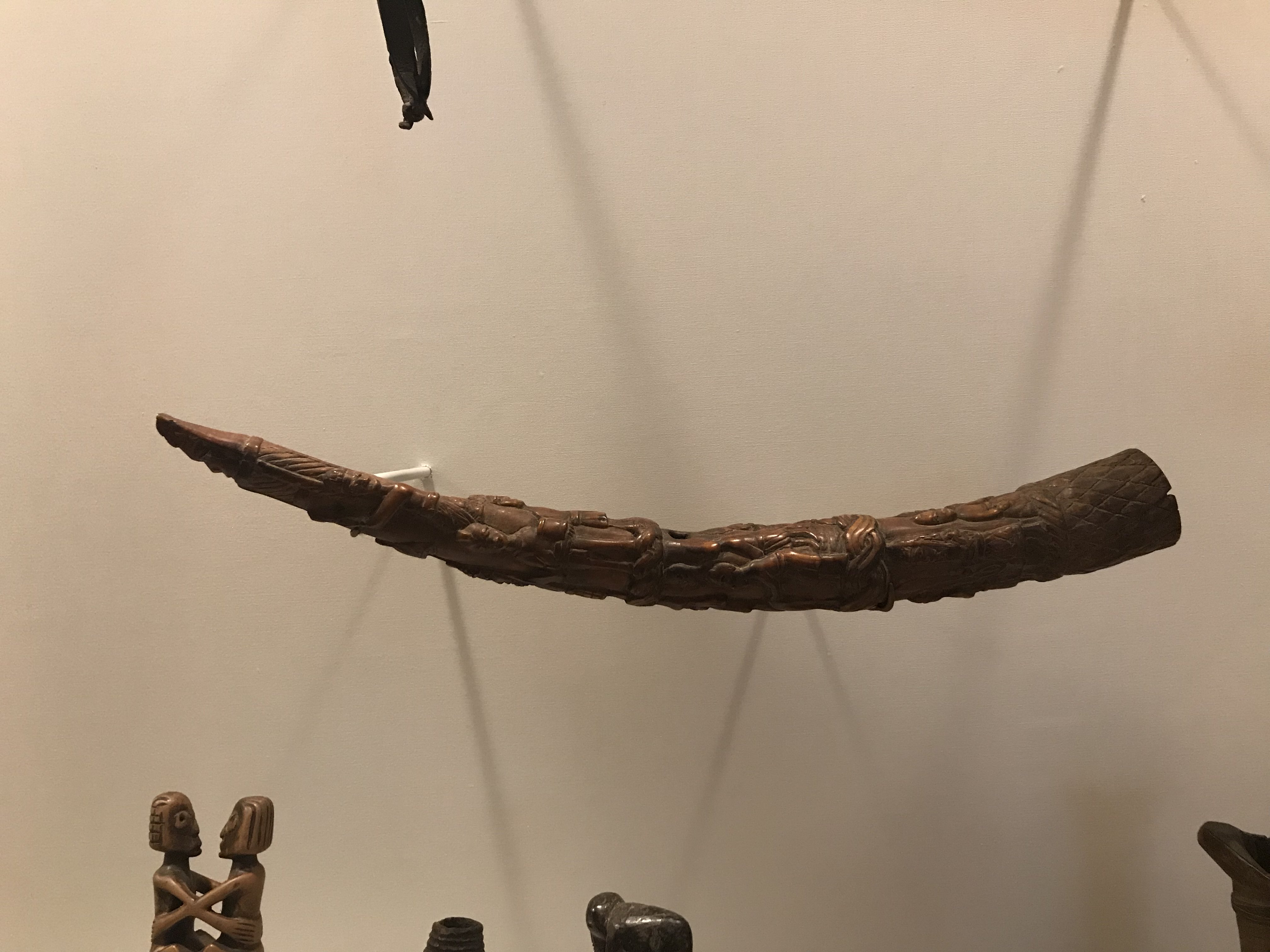
The oko is a side-blown horn from Nigeria made by the Edo.
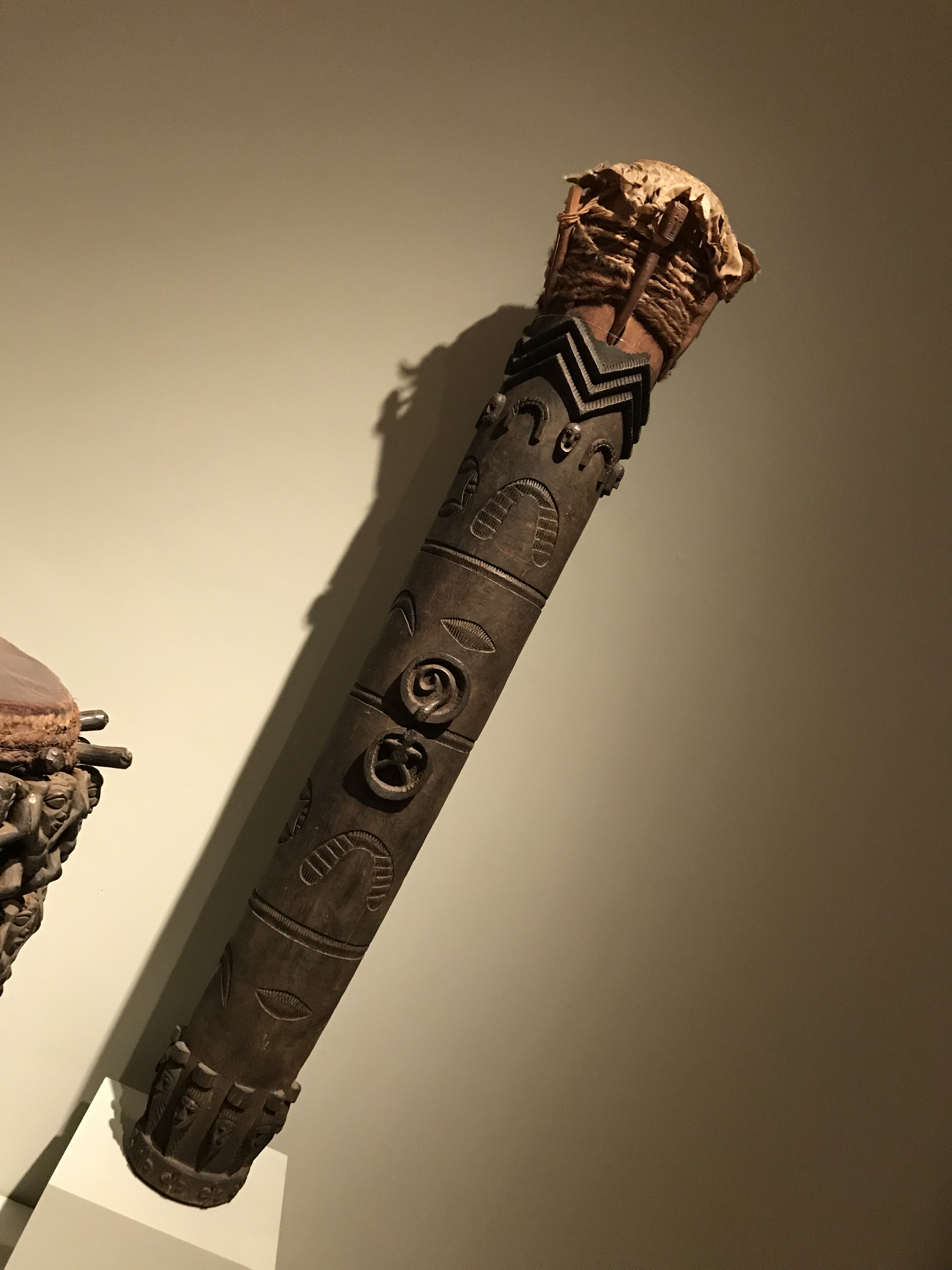
The pende or "long drum" is from the Ivory Coast and is used mainly as a medium-range communication instrument.
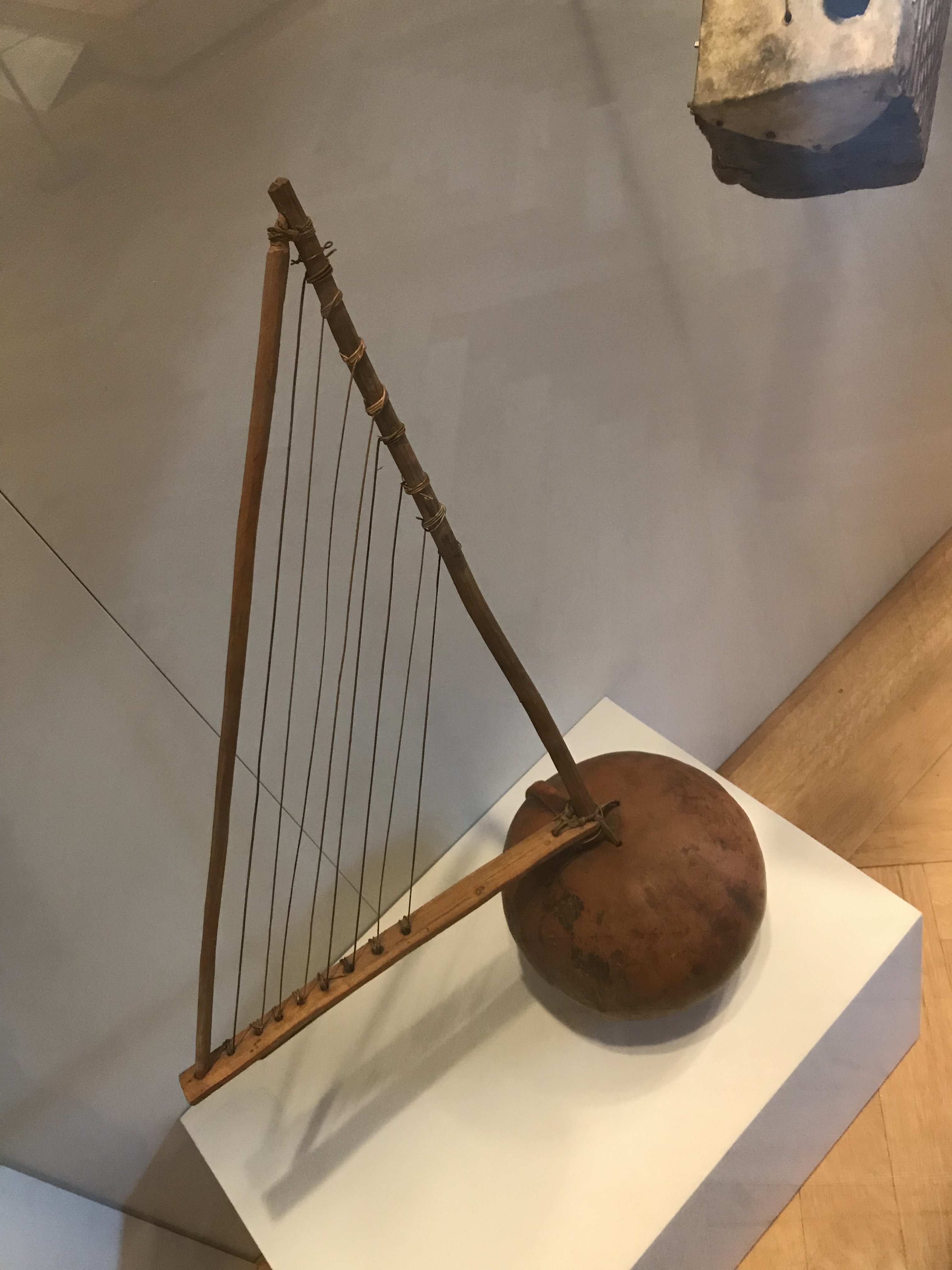
The oba is a zither from Sierra Leone, used for entertainment rather than ritual purposes.
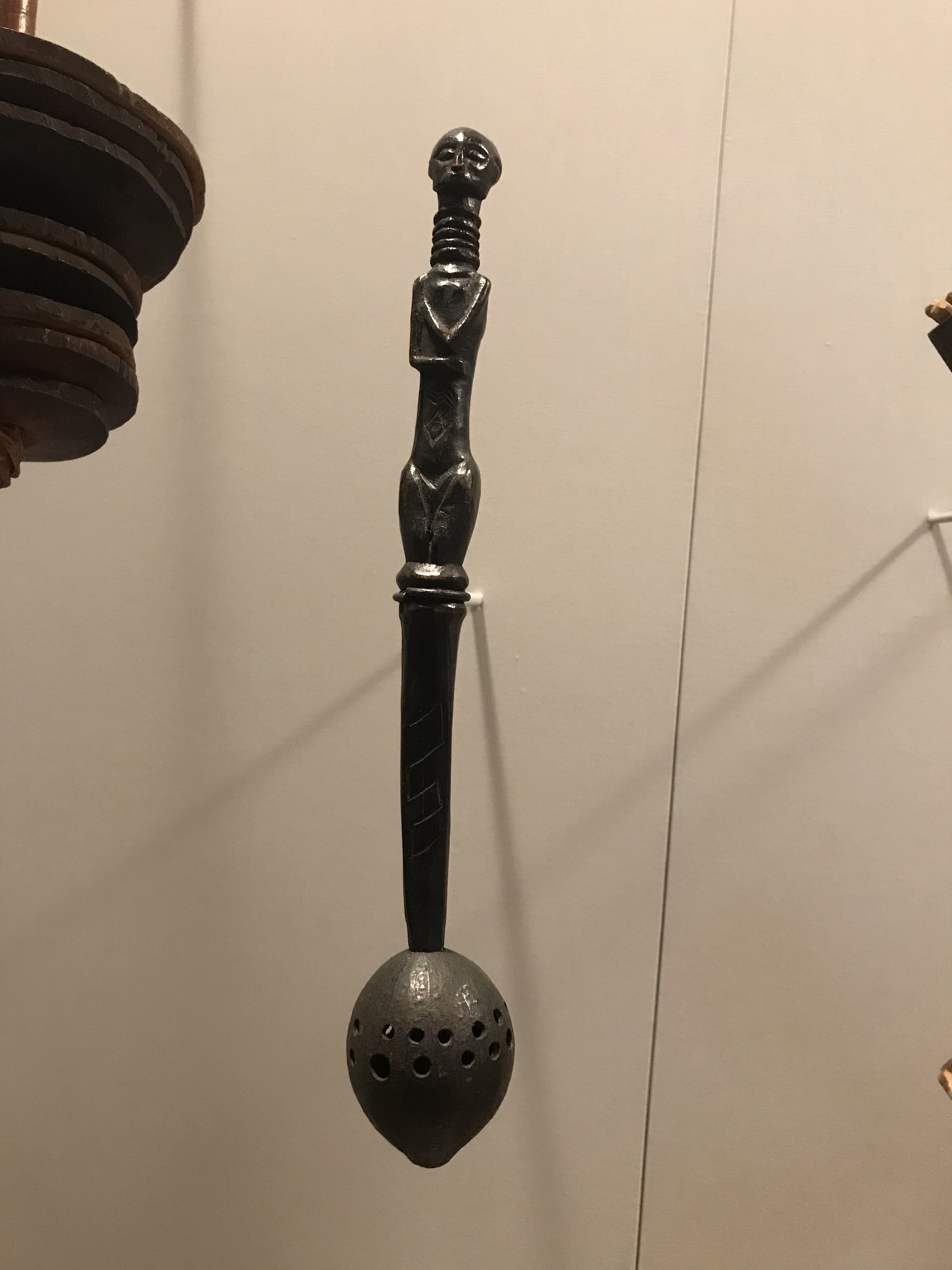
This is a Congolese rattle made from seeds and fruit shells. These rattles are shaken with the hand or worn around the wrists and ankles to emphasize dance movements.
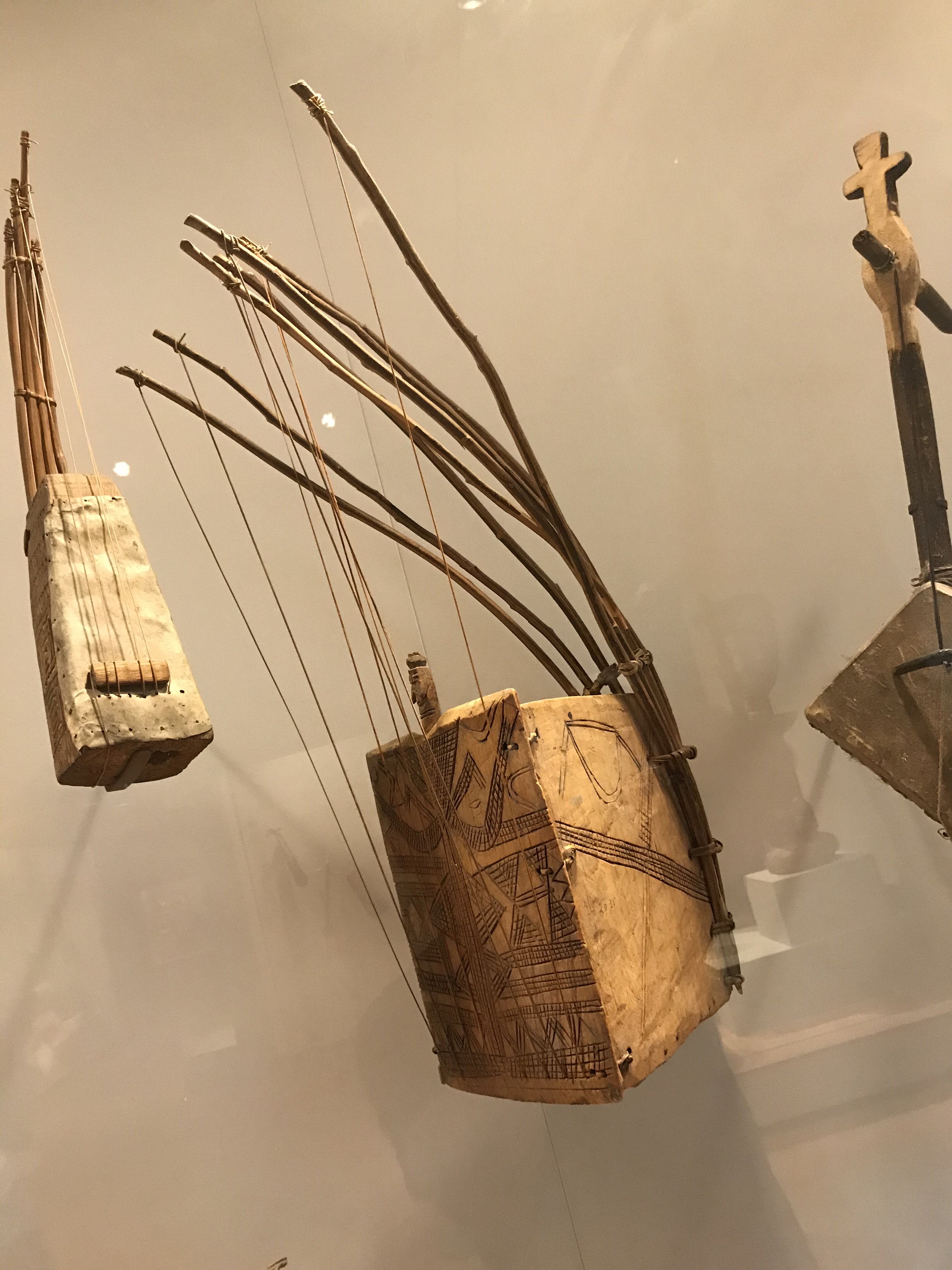
This instrument from the Igbo of Nigeria is unique in that each string has its own curved stick that determines the pitch when plucked.
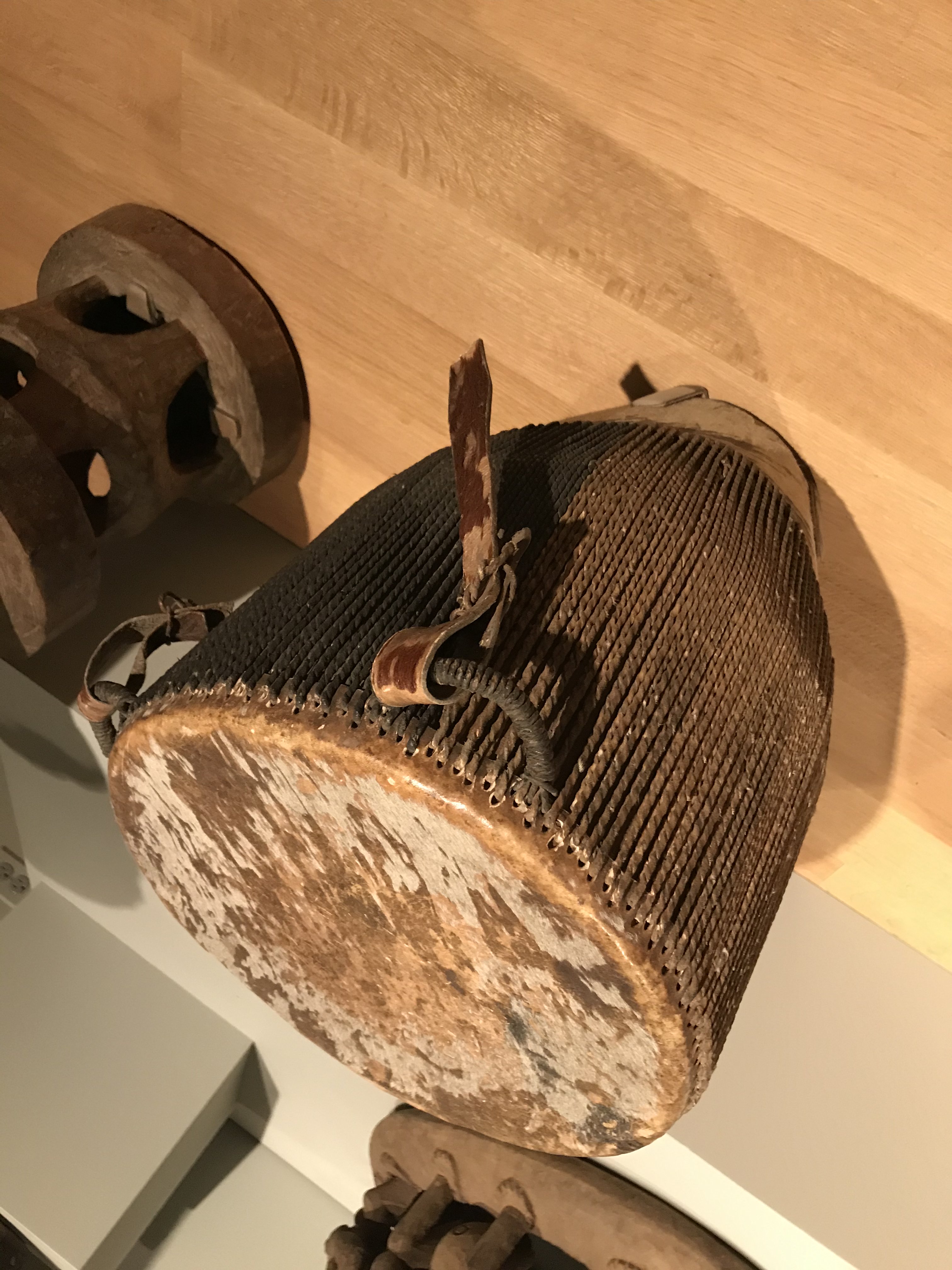
This is an East African drum with two membranes: one pitched, the other unpitched. The membranes are held on by a closely spaced rope lacing.
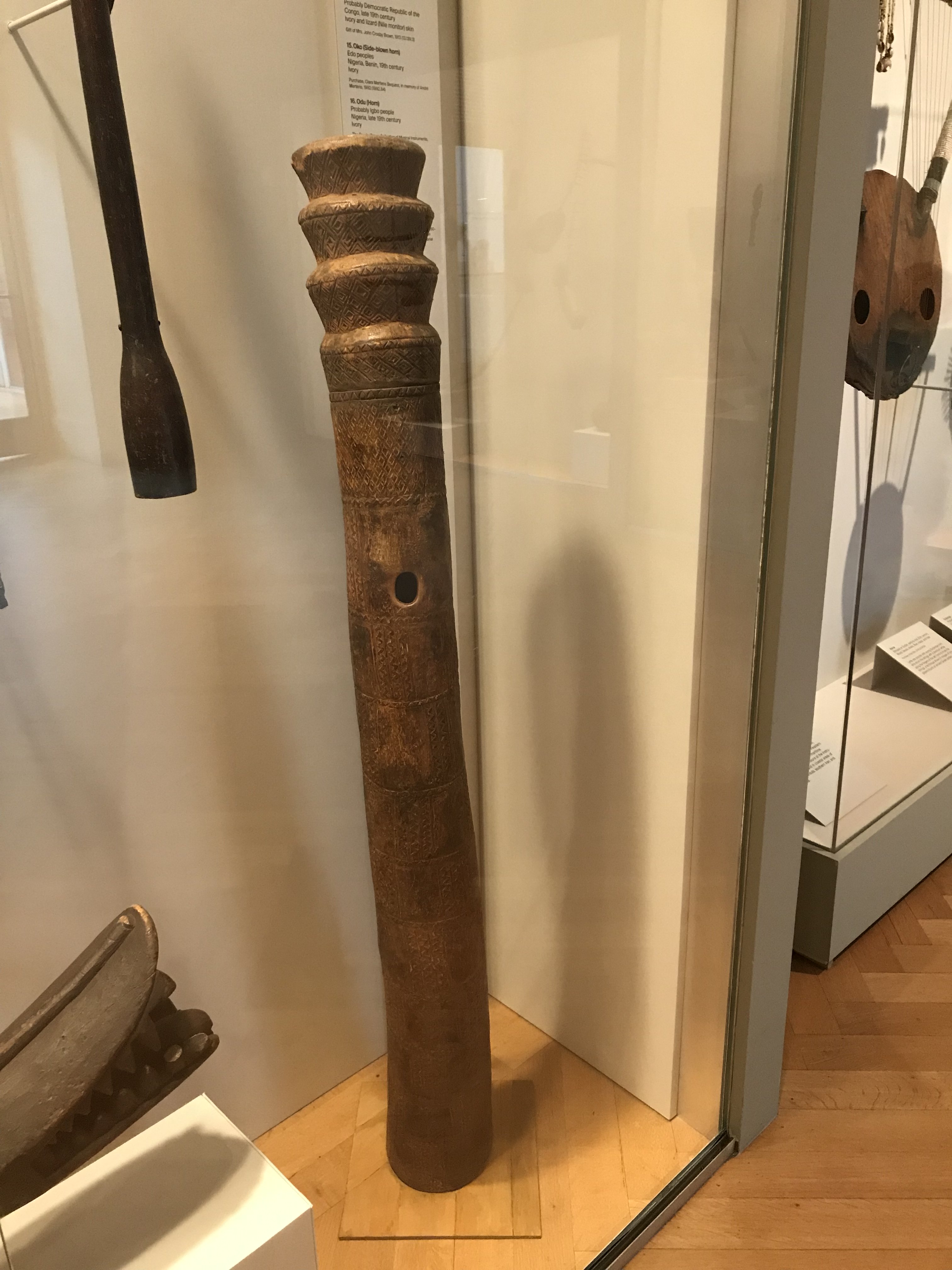
The yuge is a wood and leather horn from the Dinka people of Sudan.
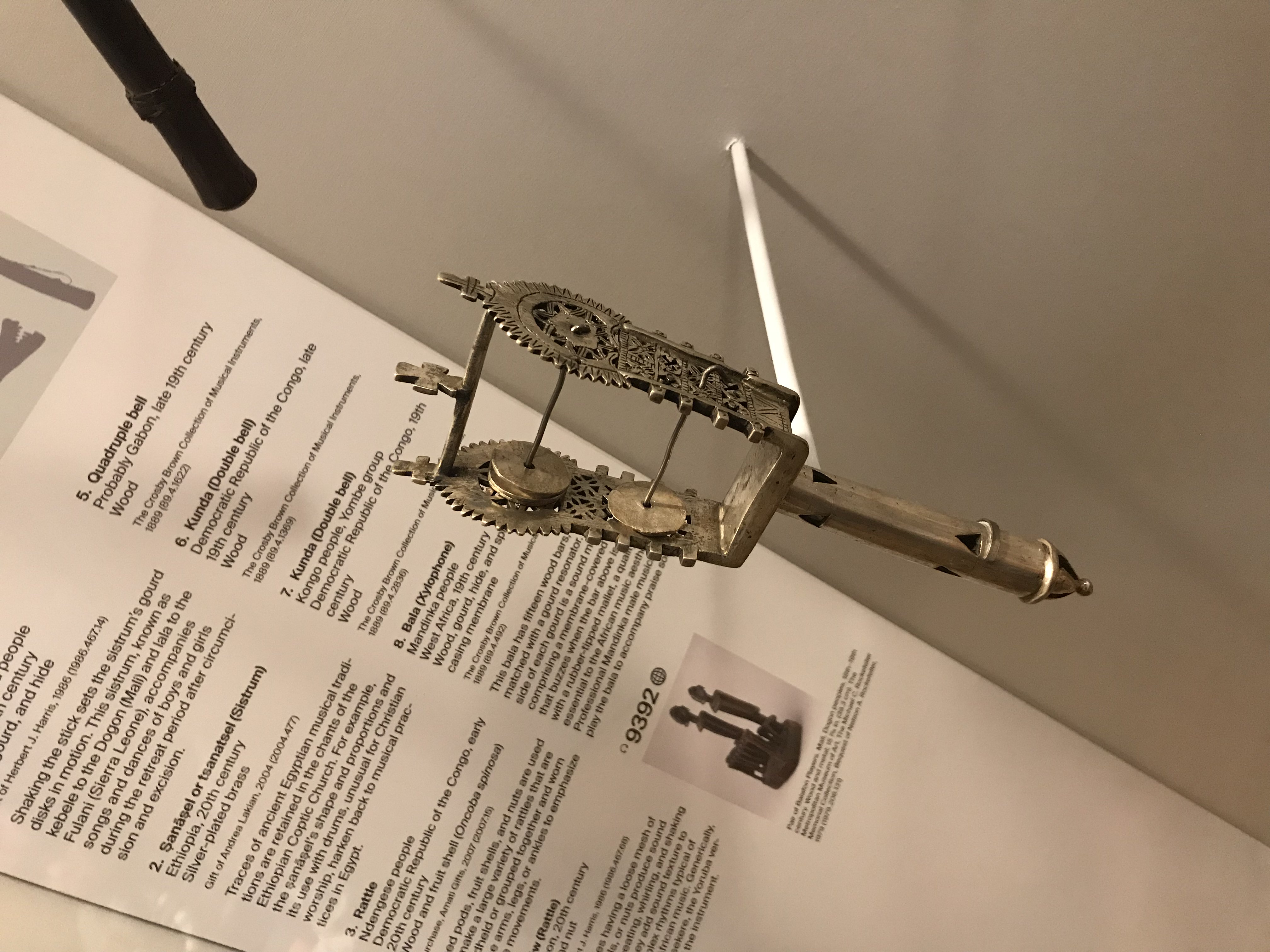
The tsanatsel is a metallic Egyptian shaker. This specimen is decorated with crosses and used in liturgies for the Coptic Orthodox Church.
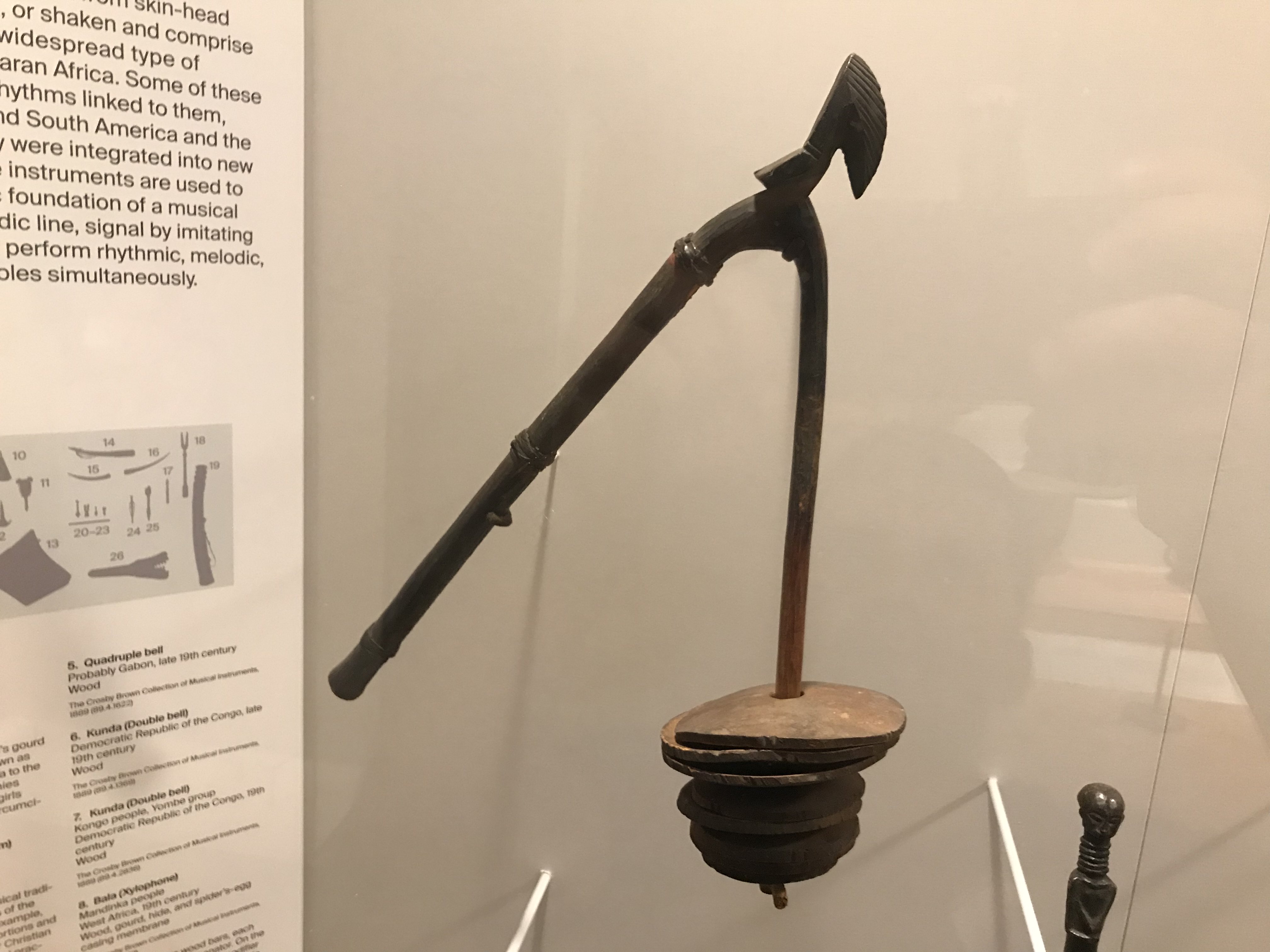
The sistrum is a Malinese instrument. Shaking the handle brushes the gourd discs against each other, creating a scraping sound. The instrument is used to accompany various youth rituals.
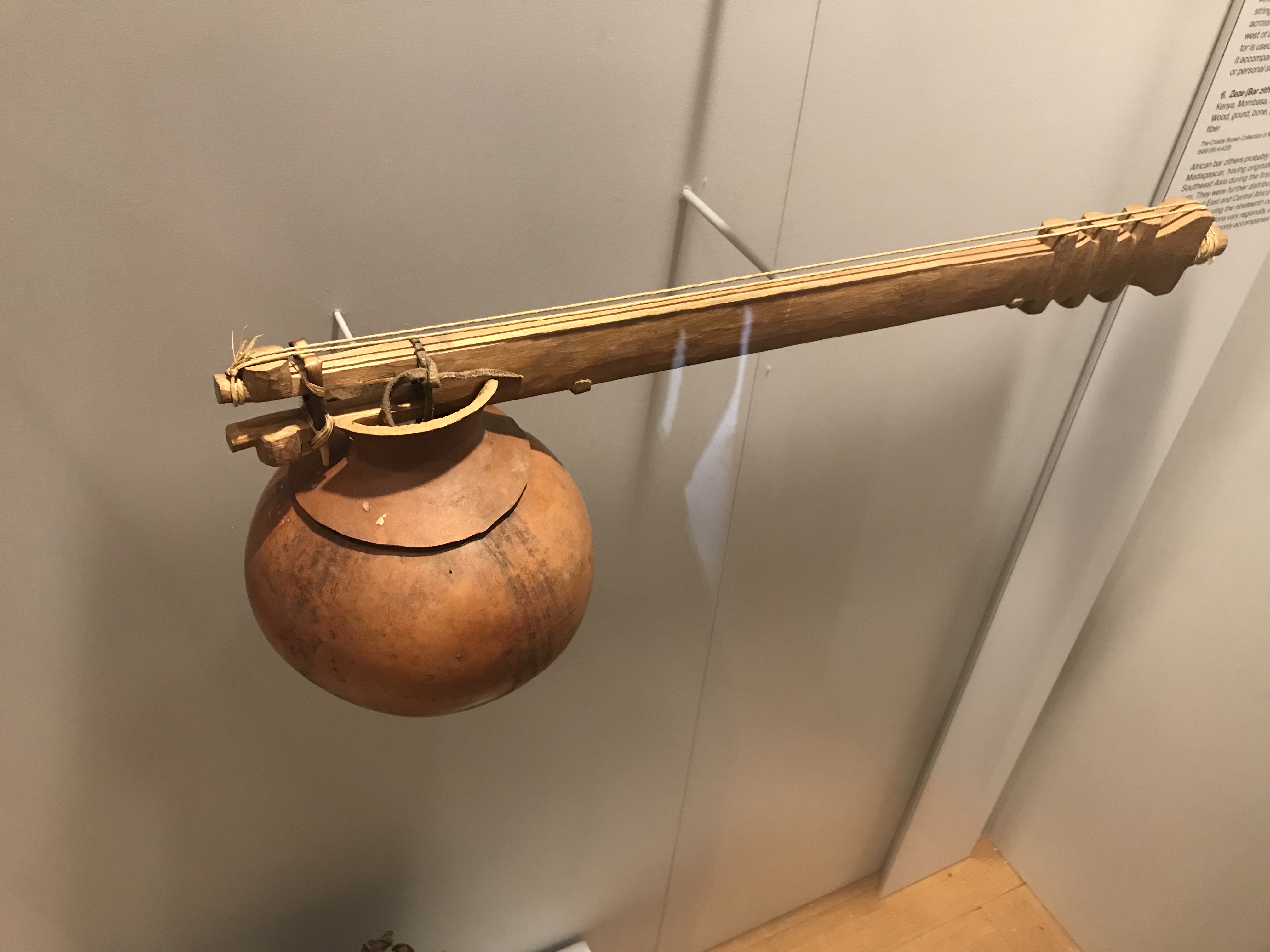
The zeze is a bar zither from Mombasa, Kenya, constructed from wood and bone with a gourd resonator and porcupine quill strings.